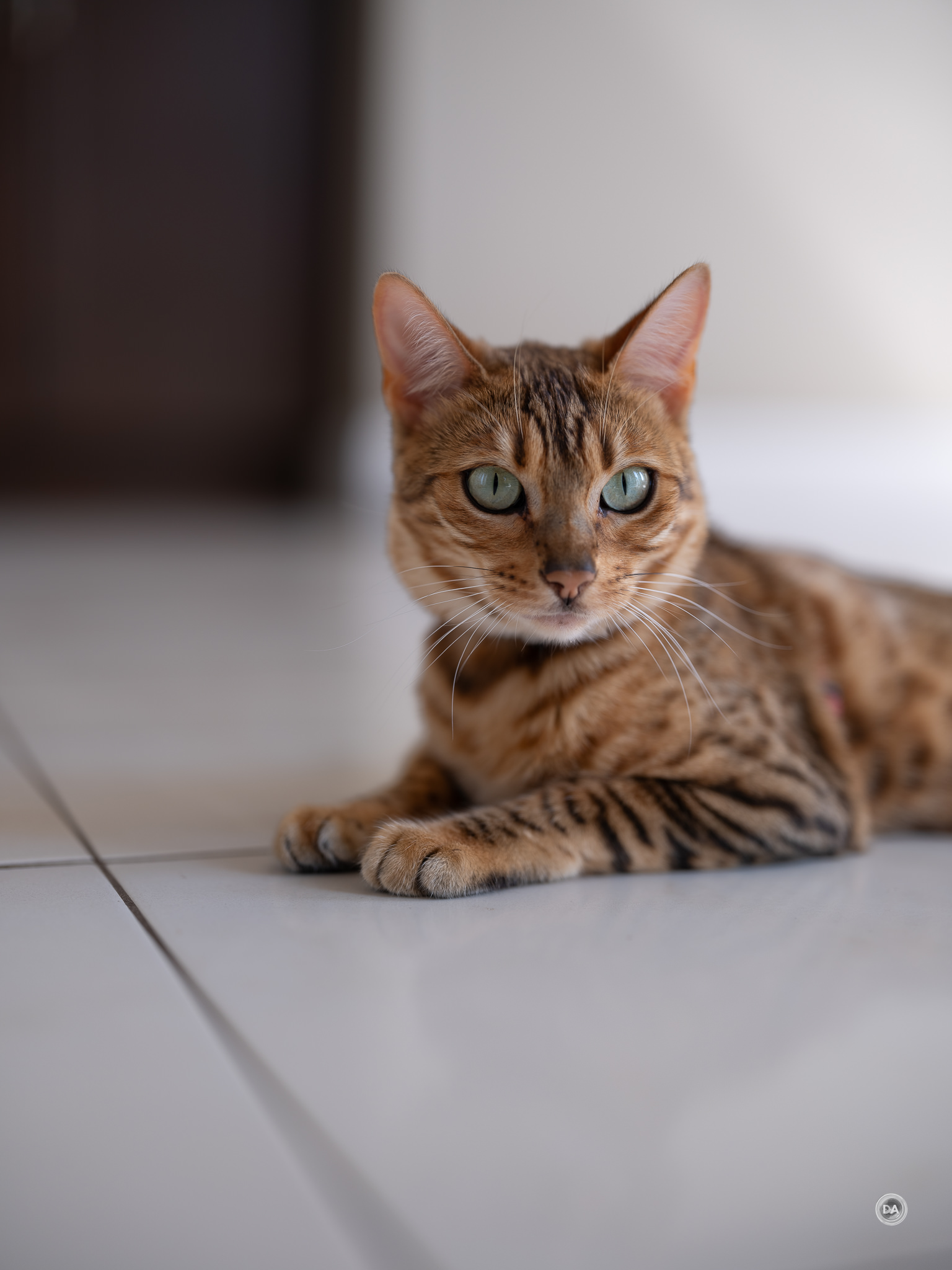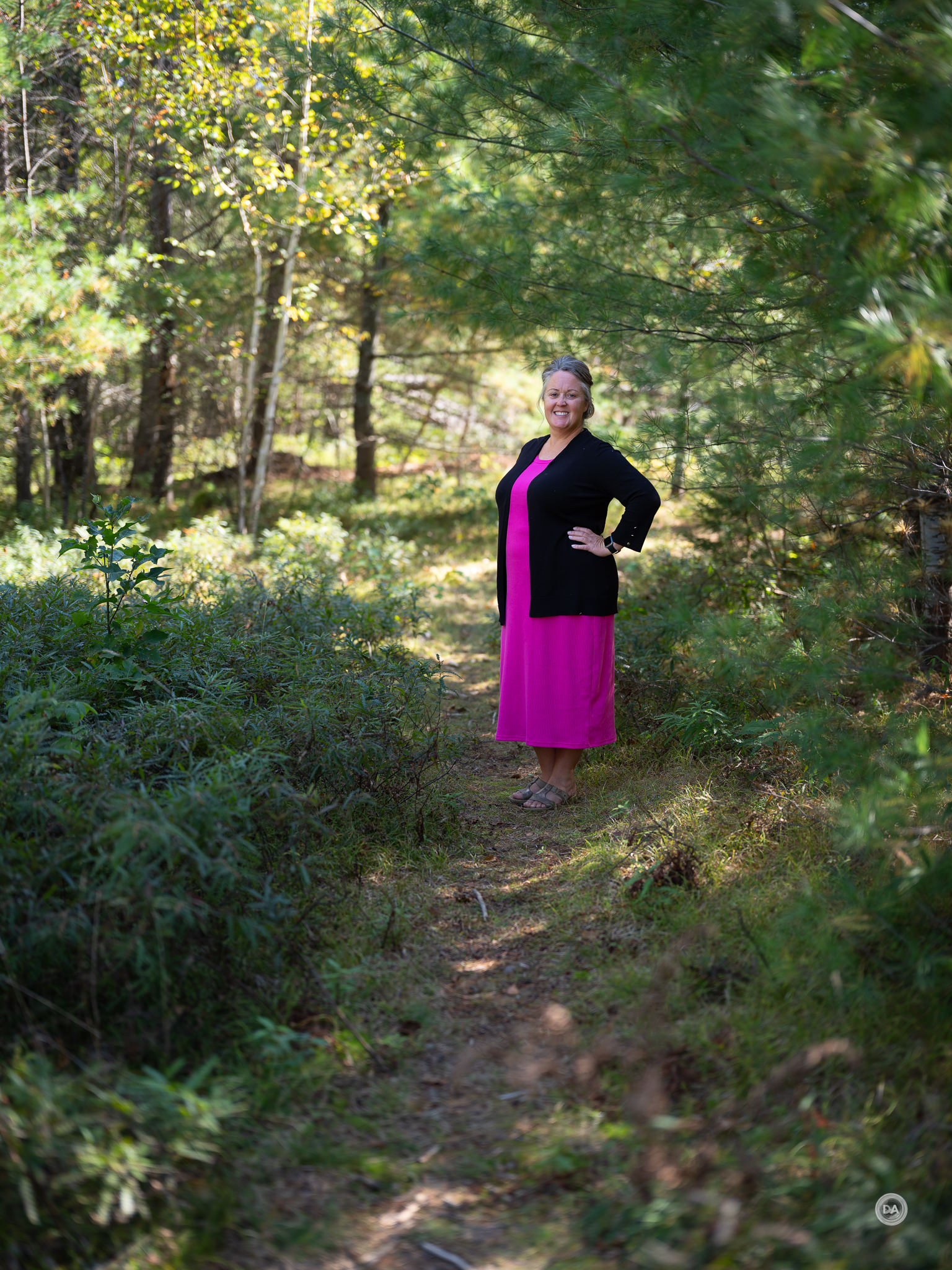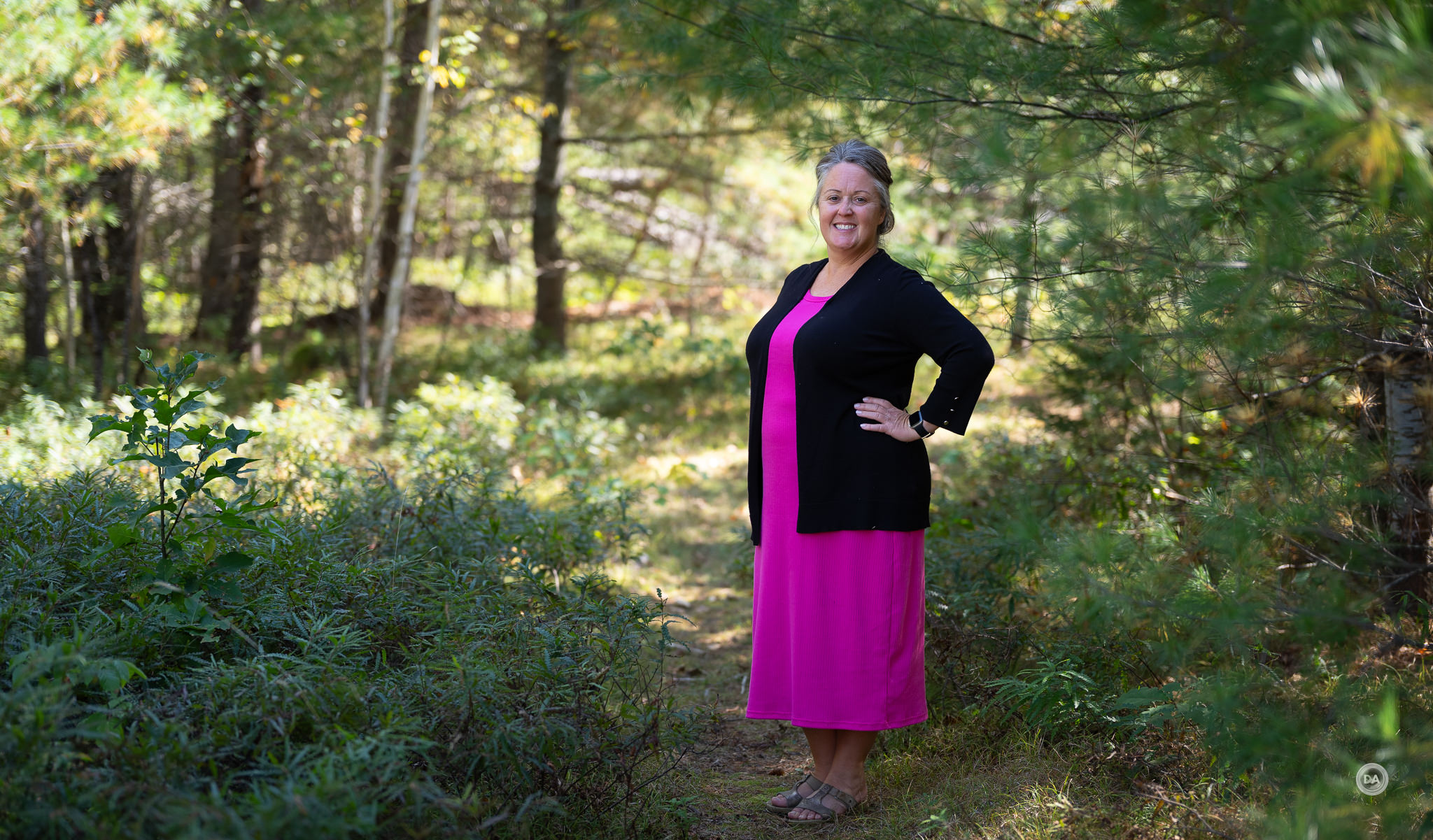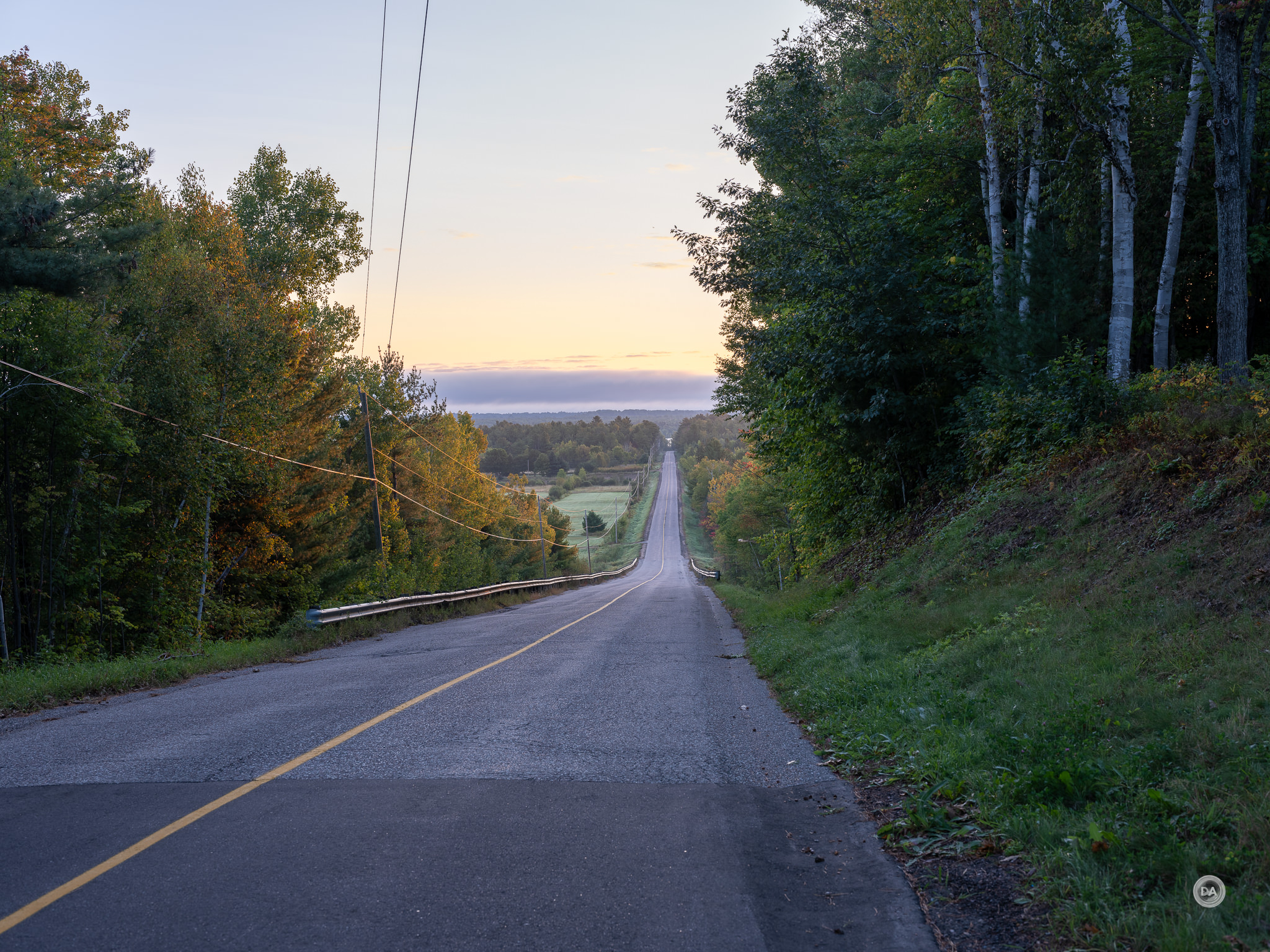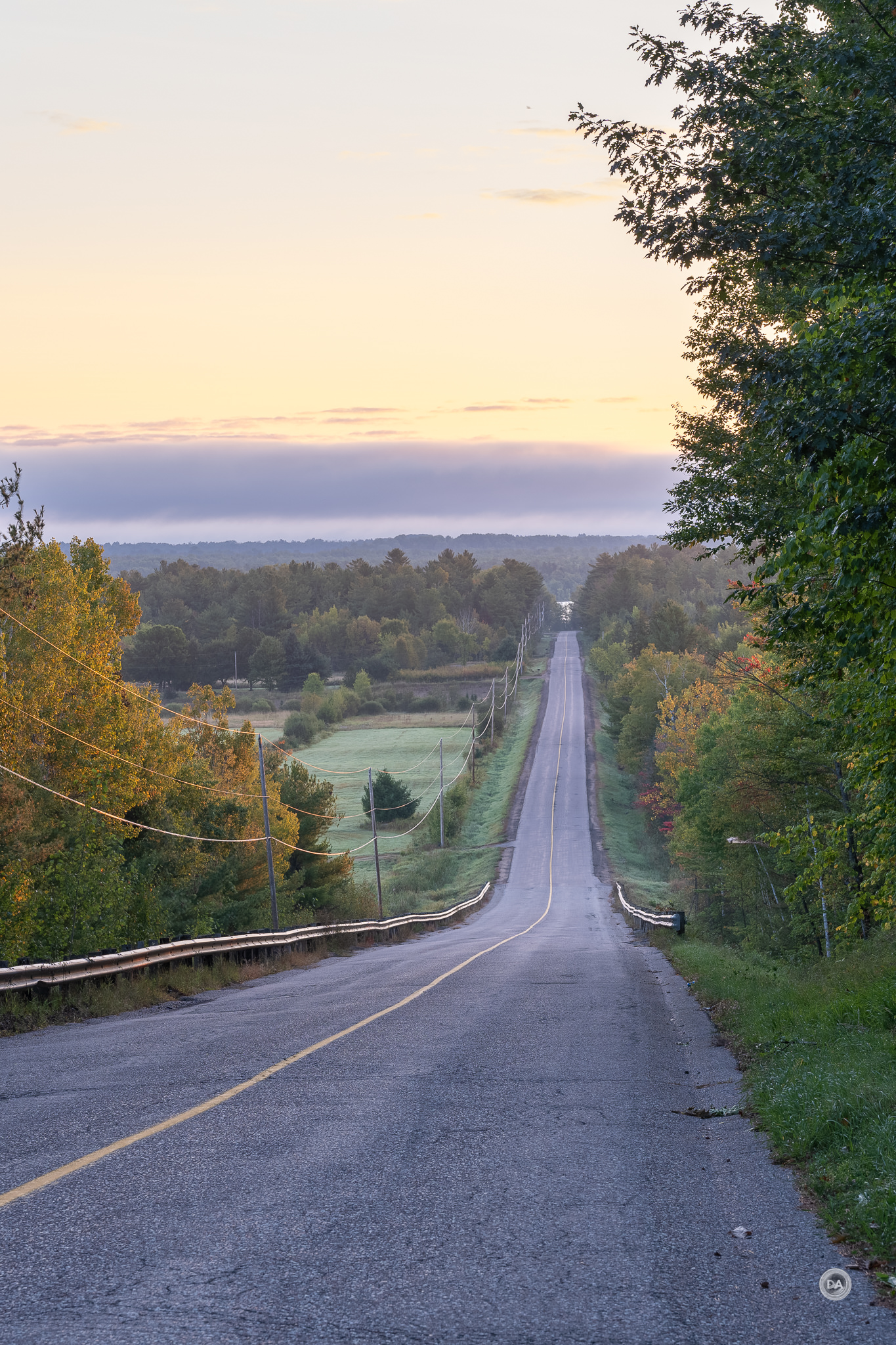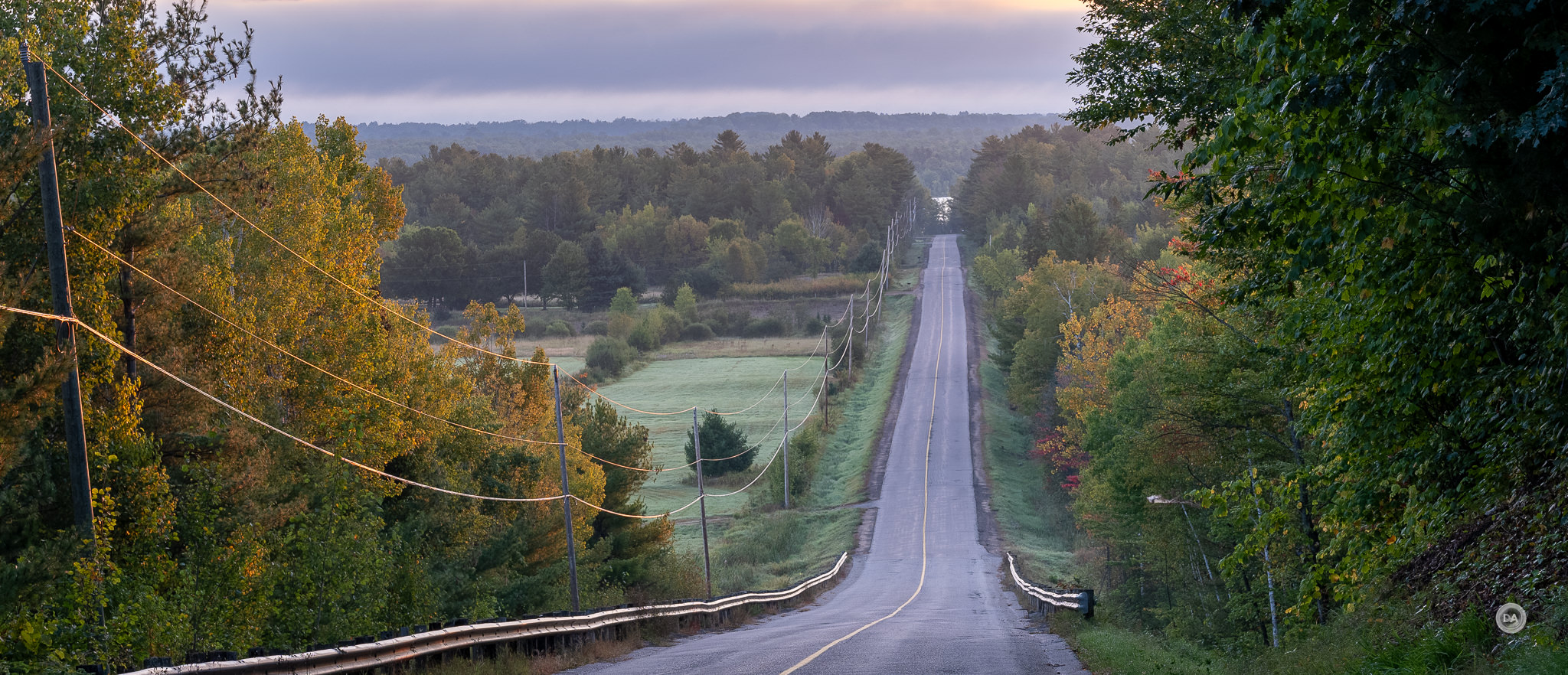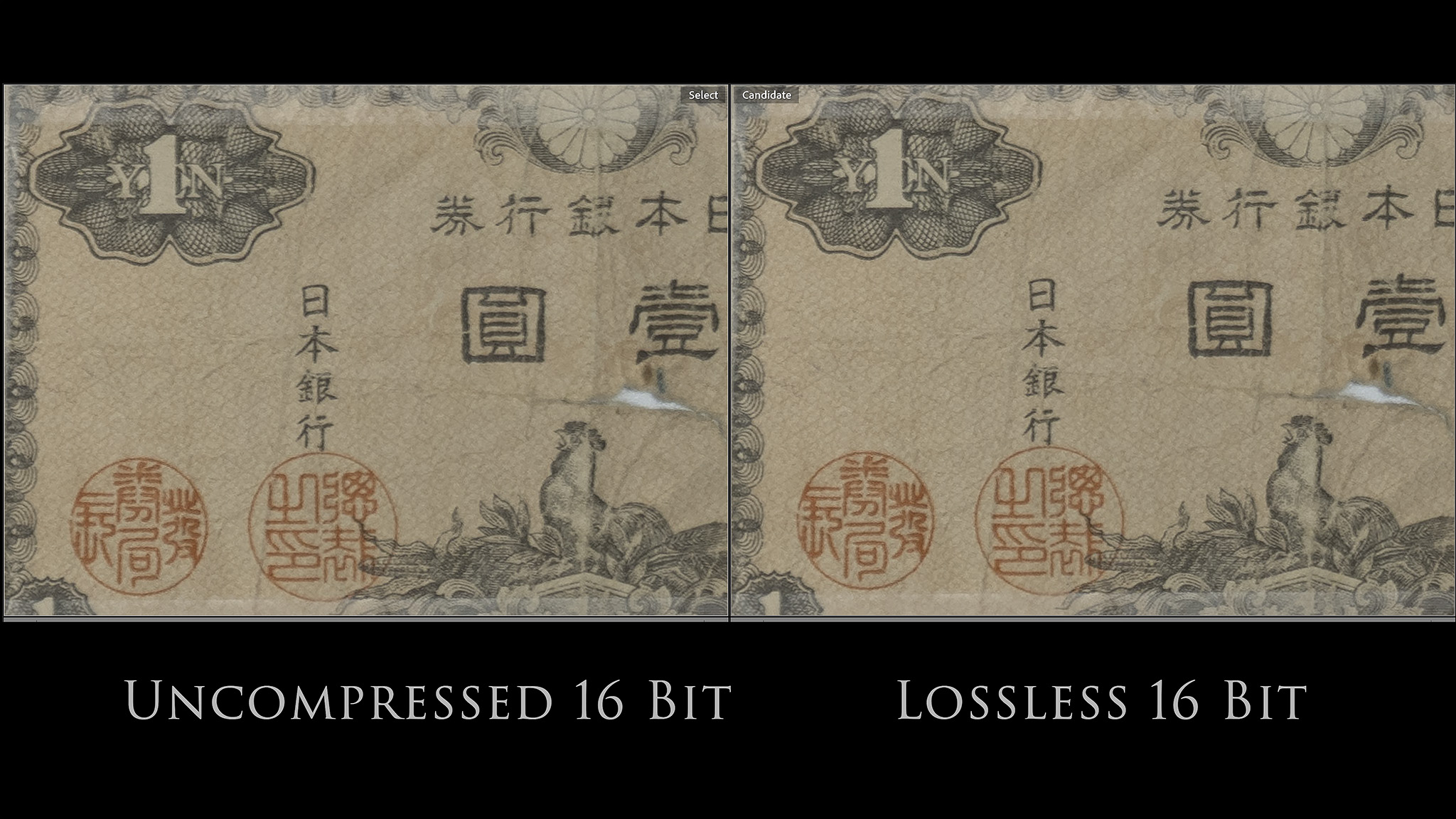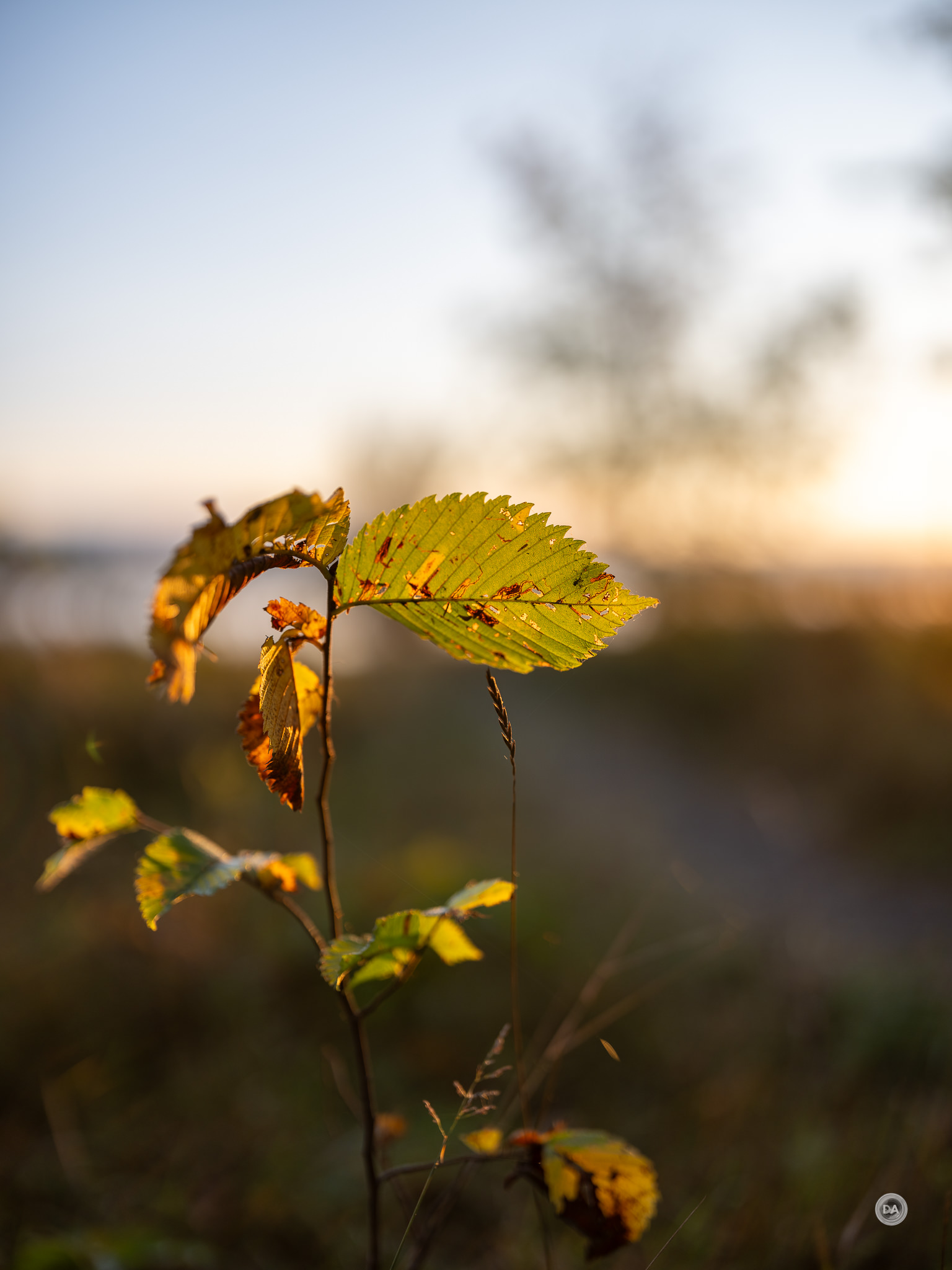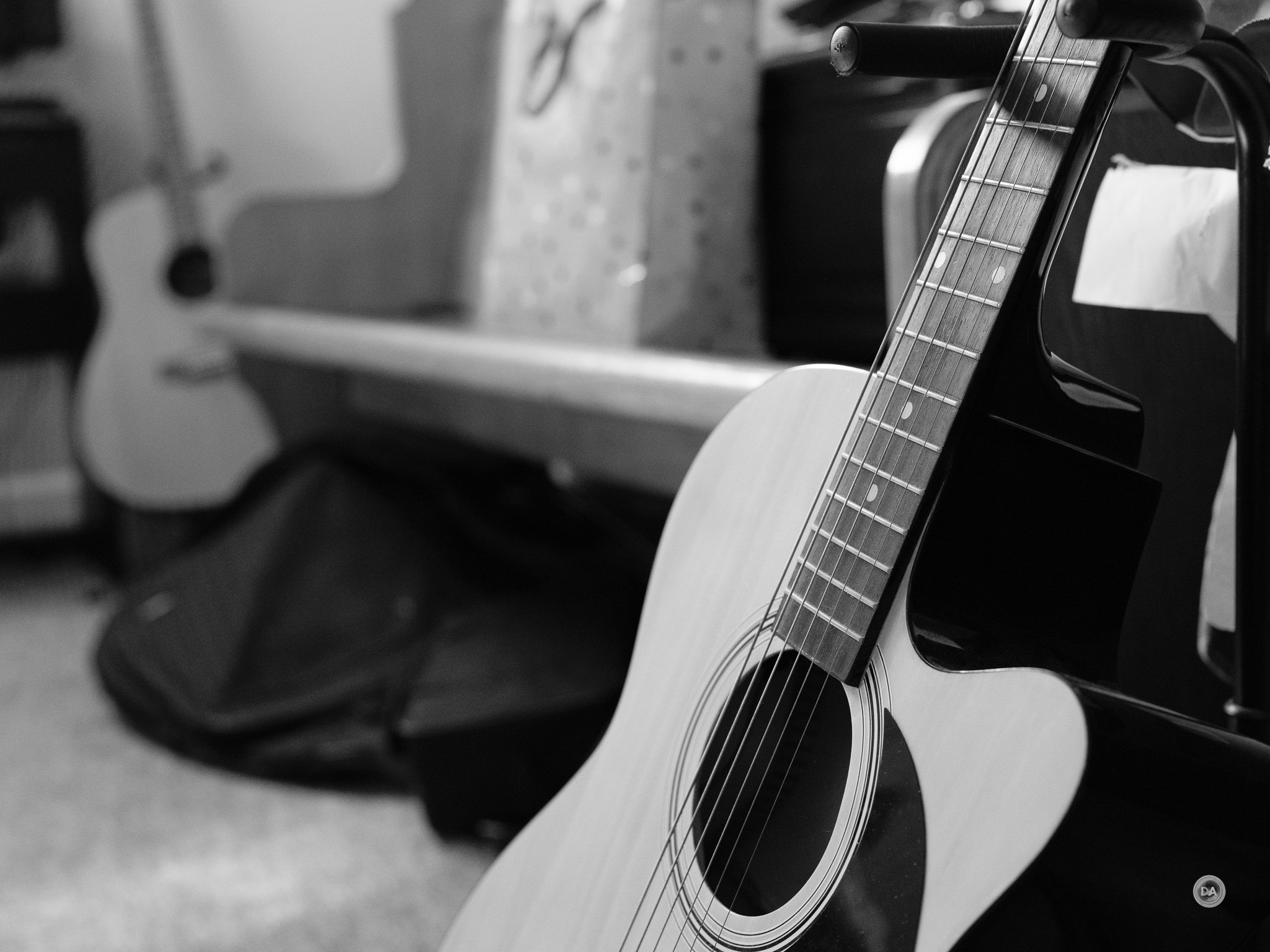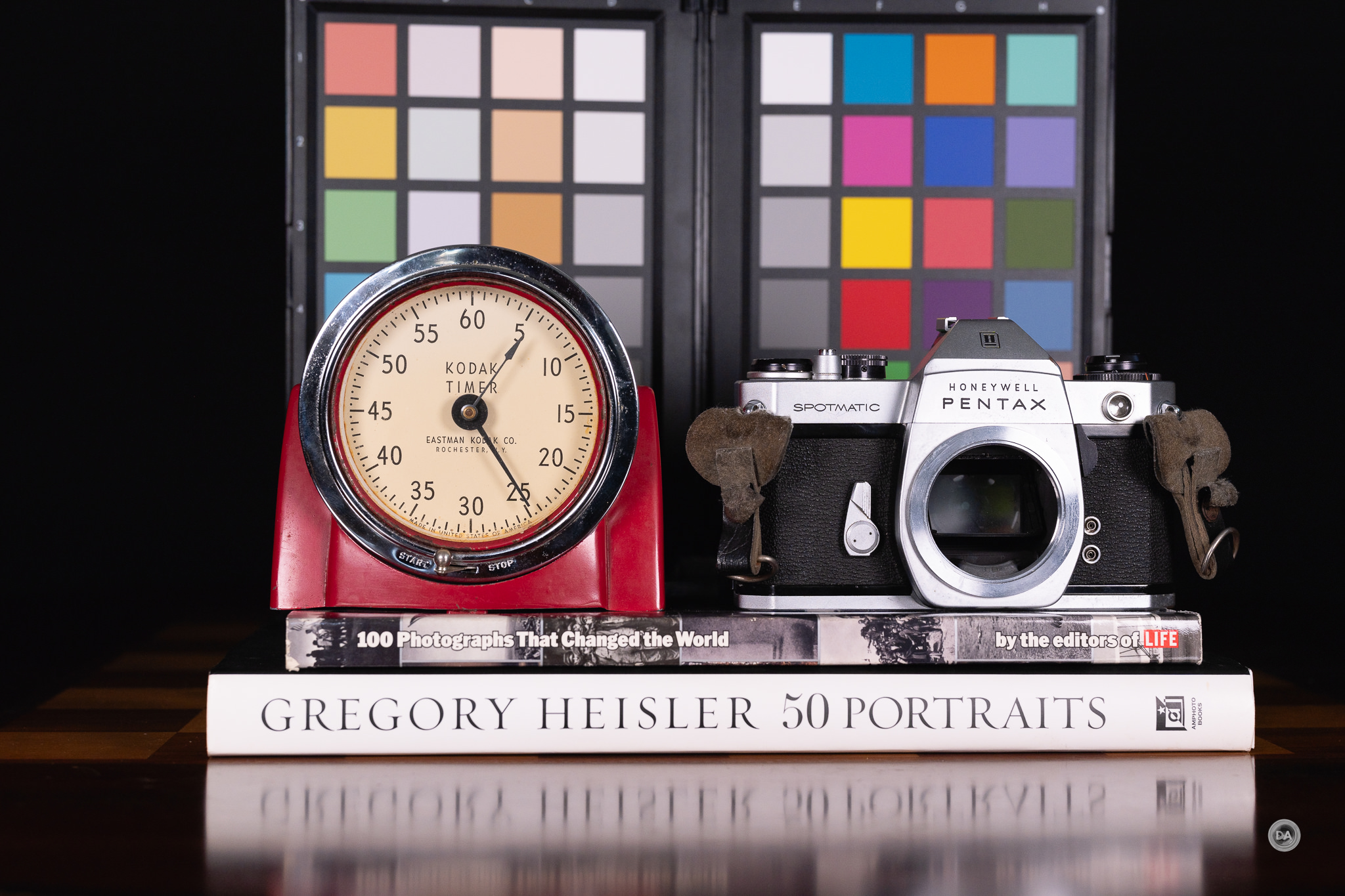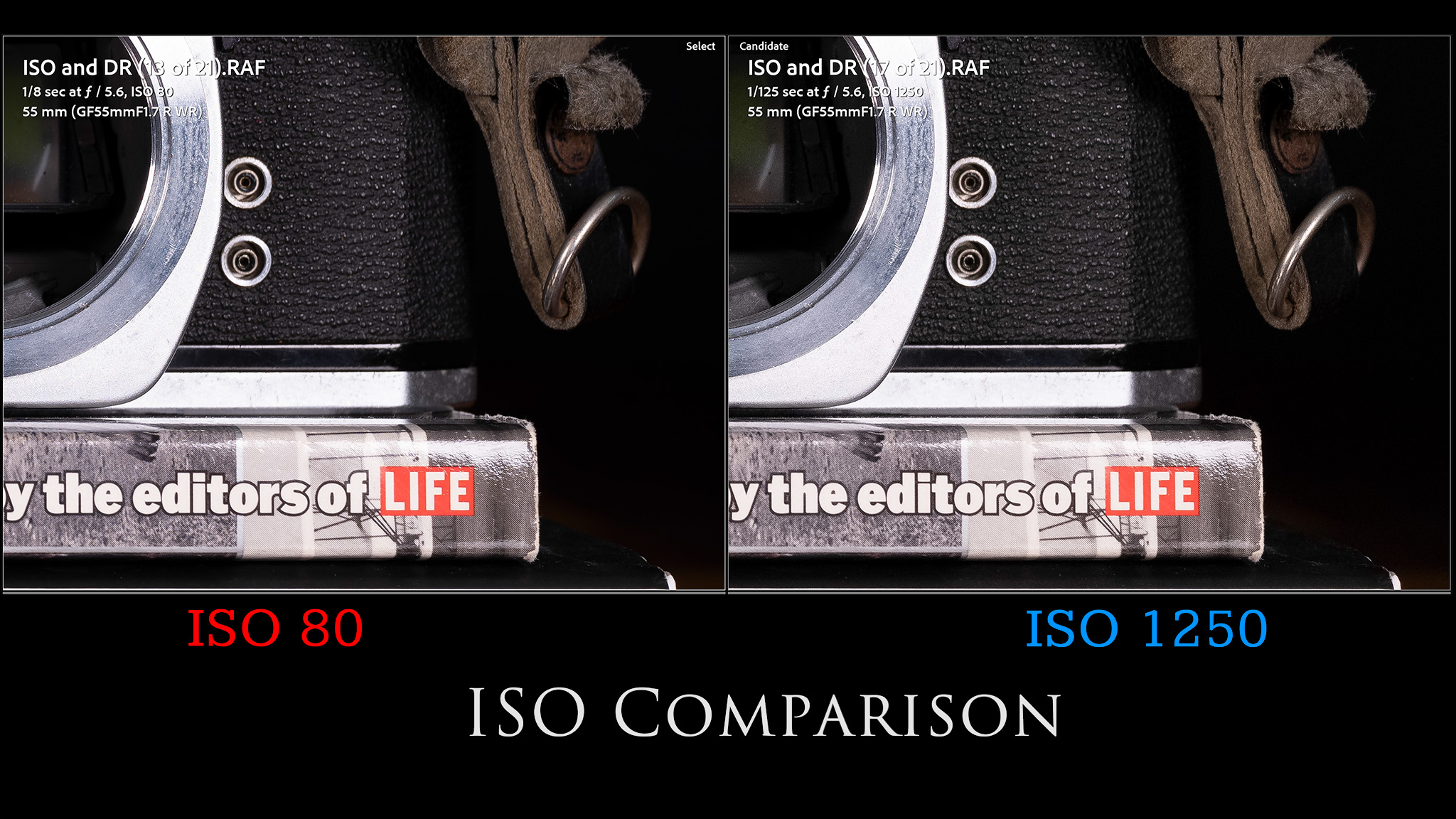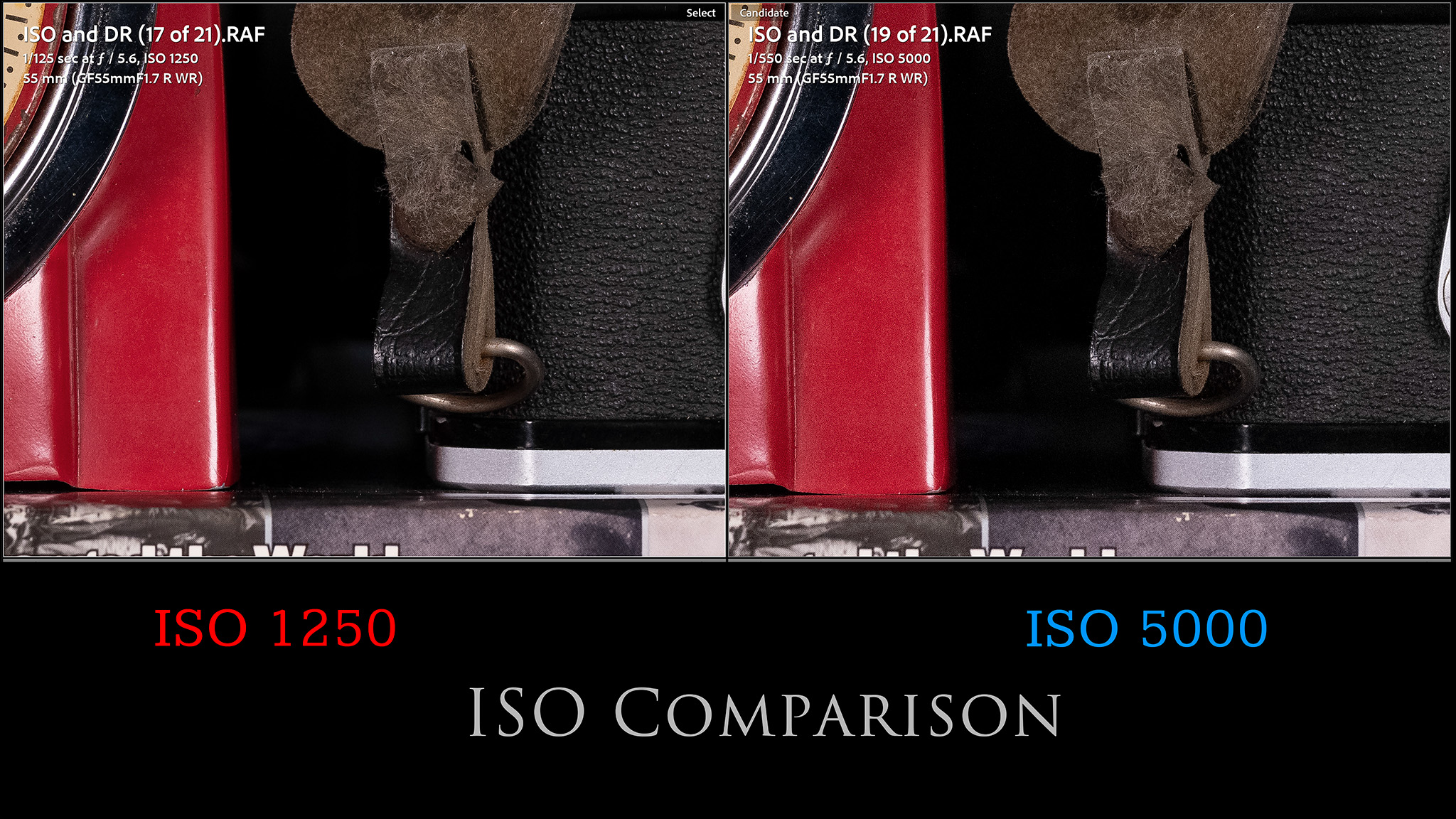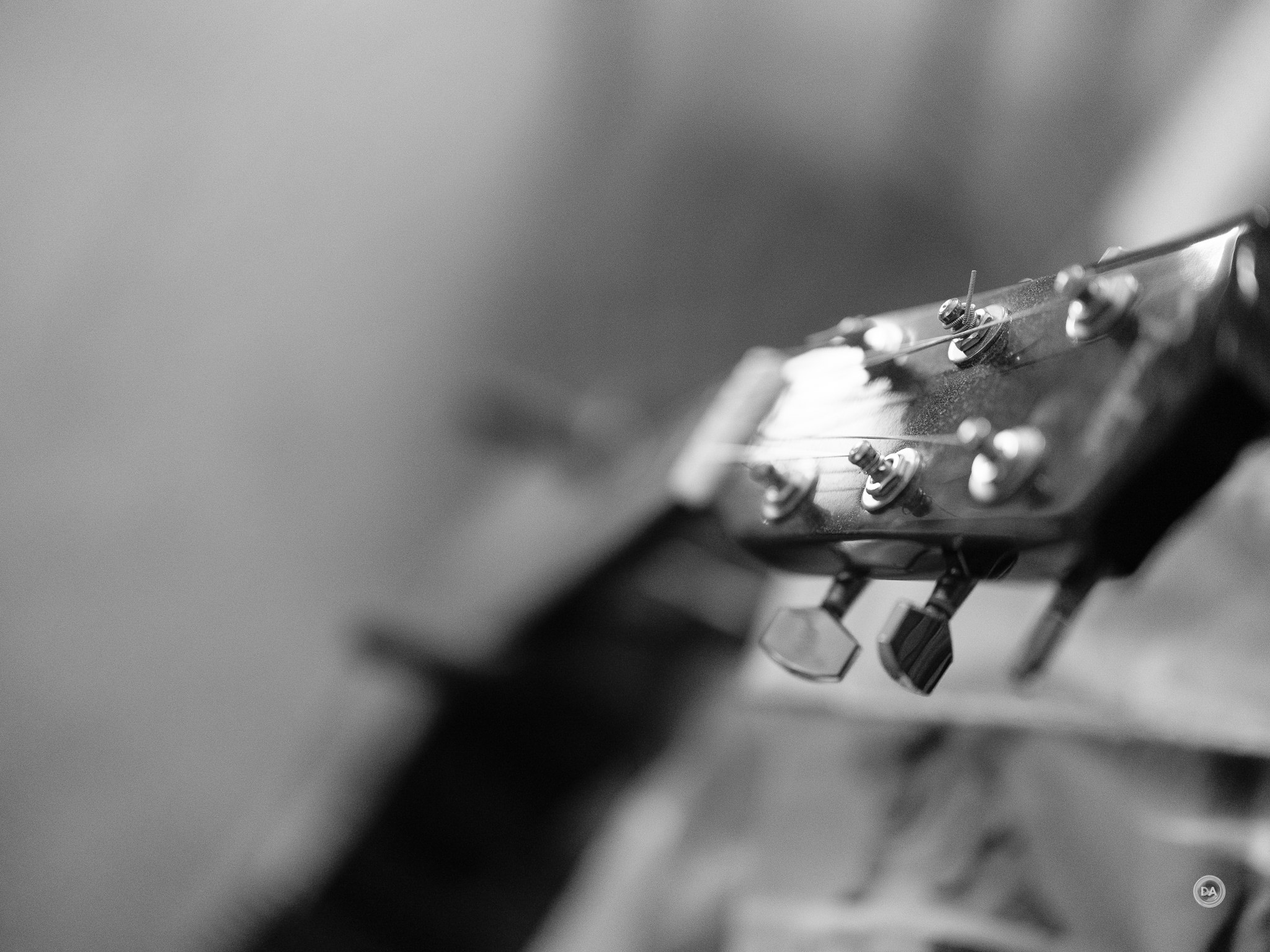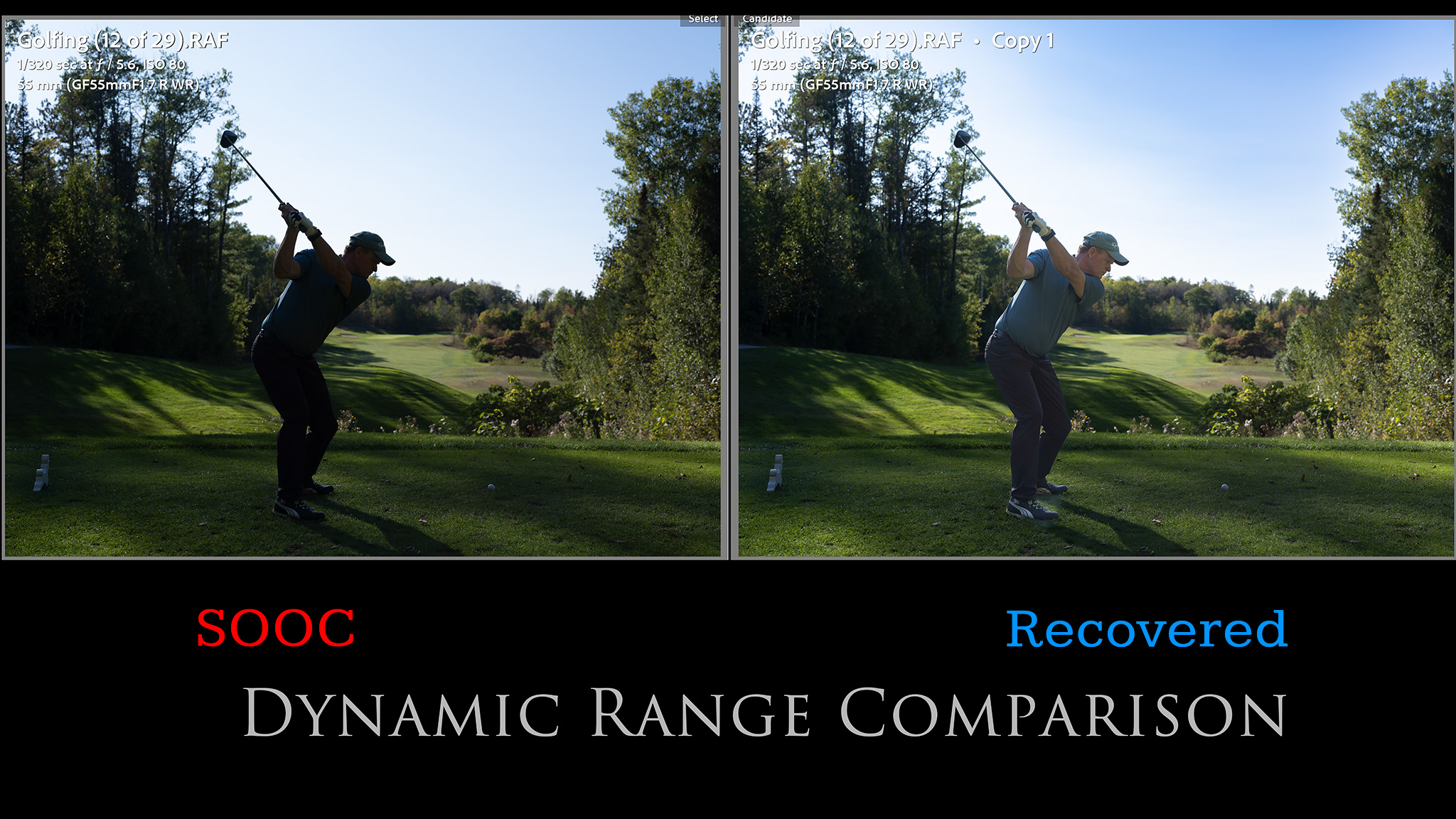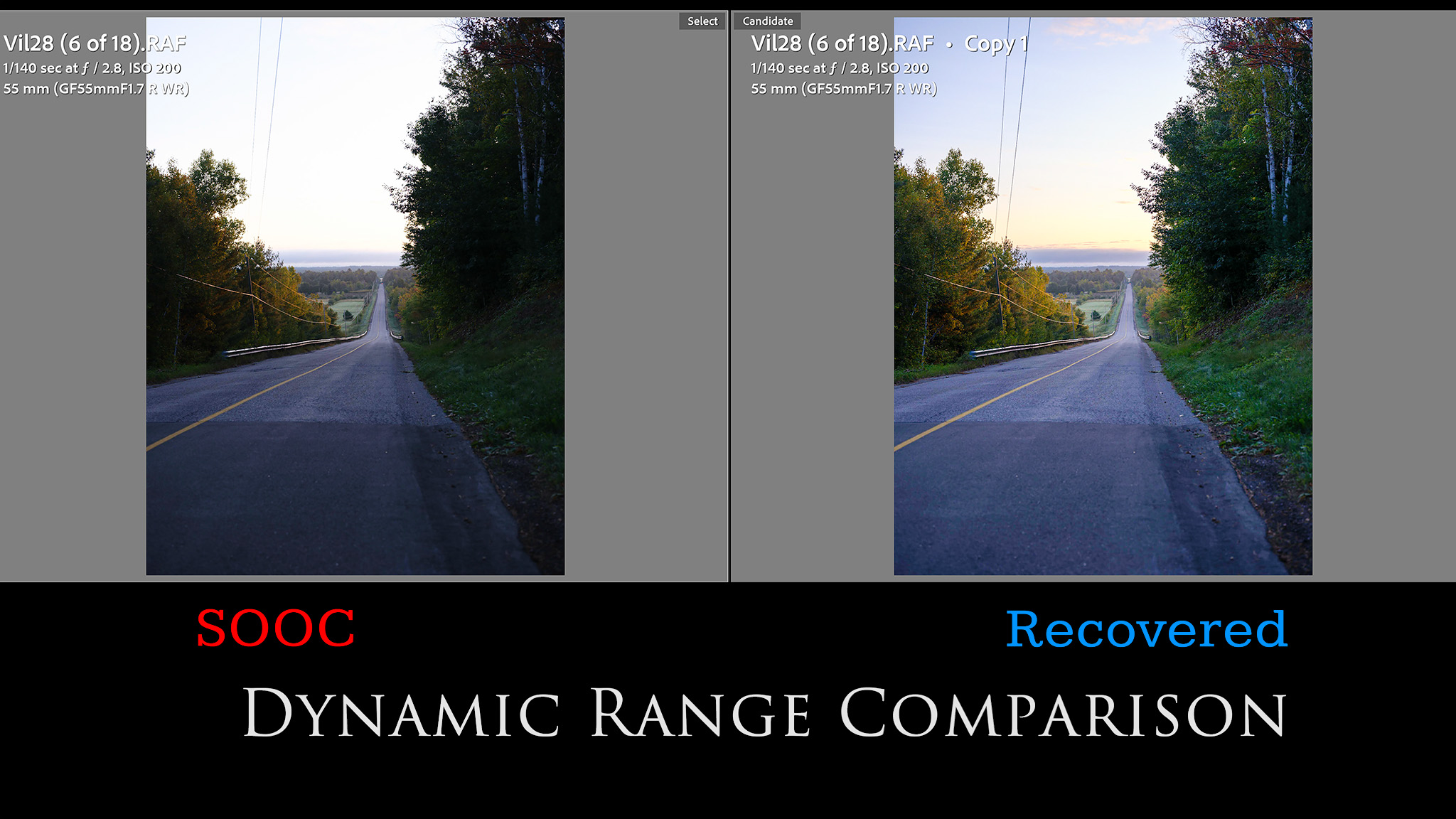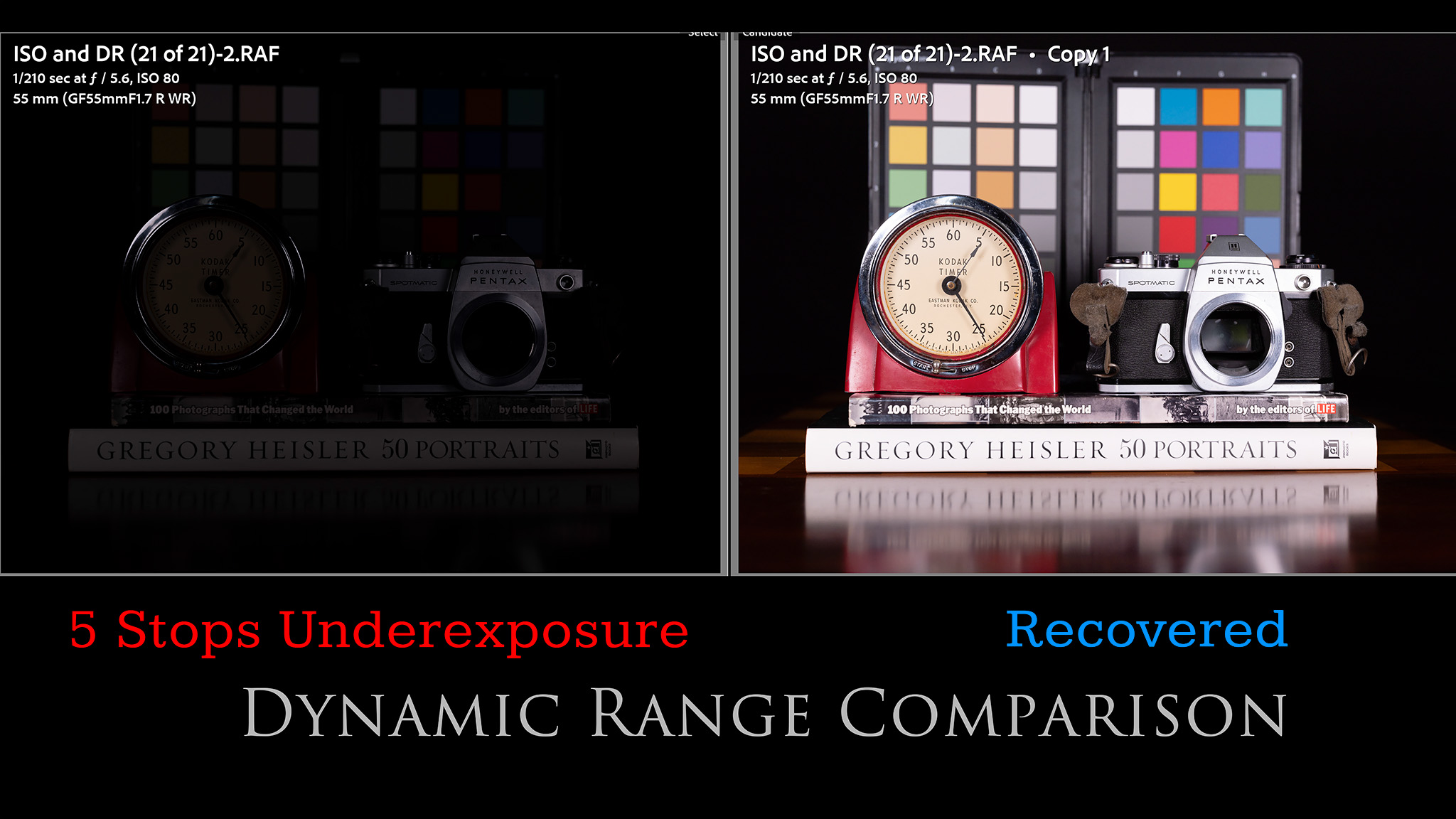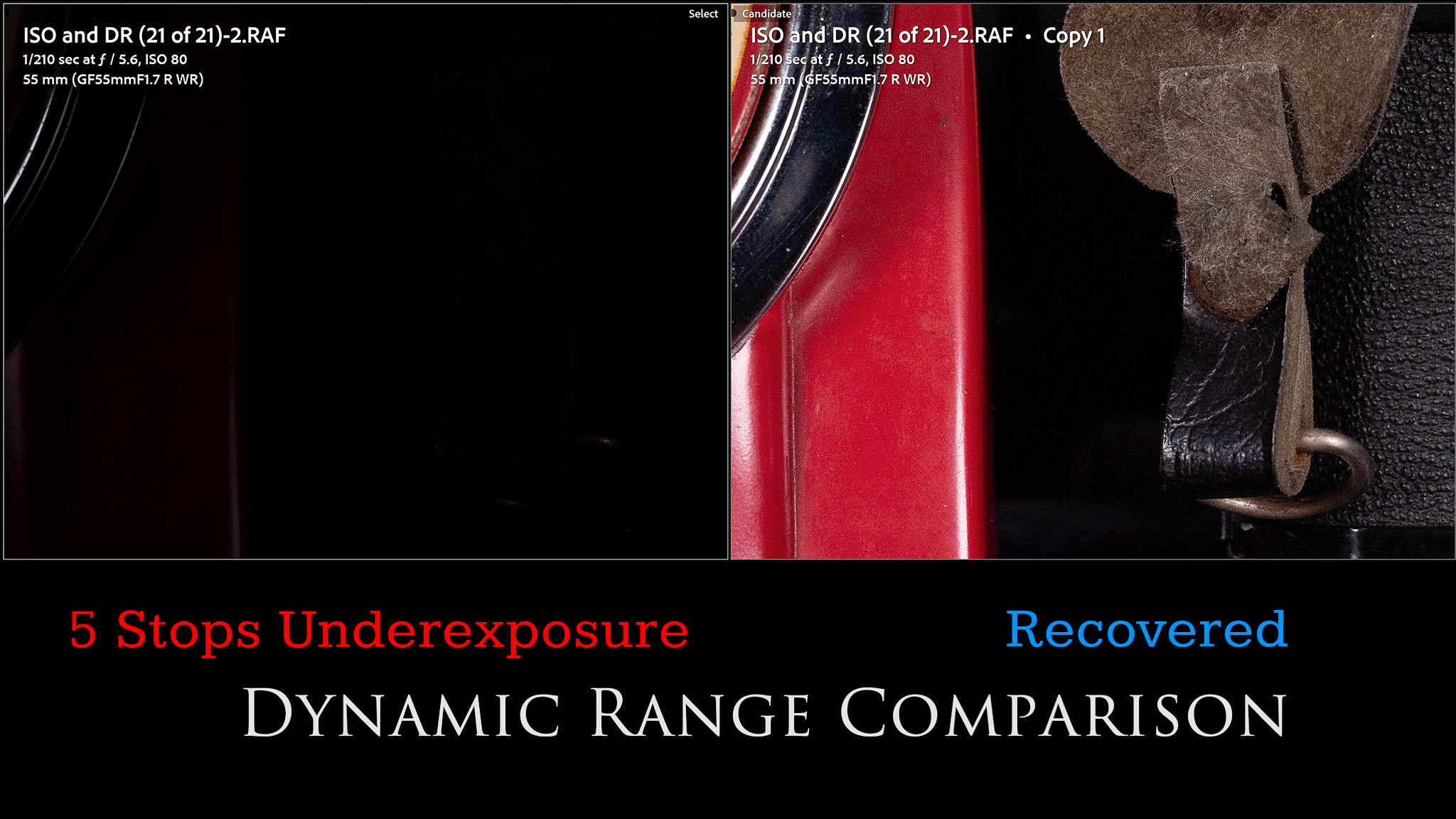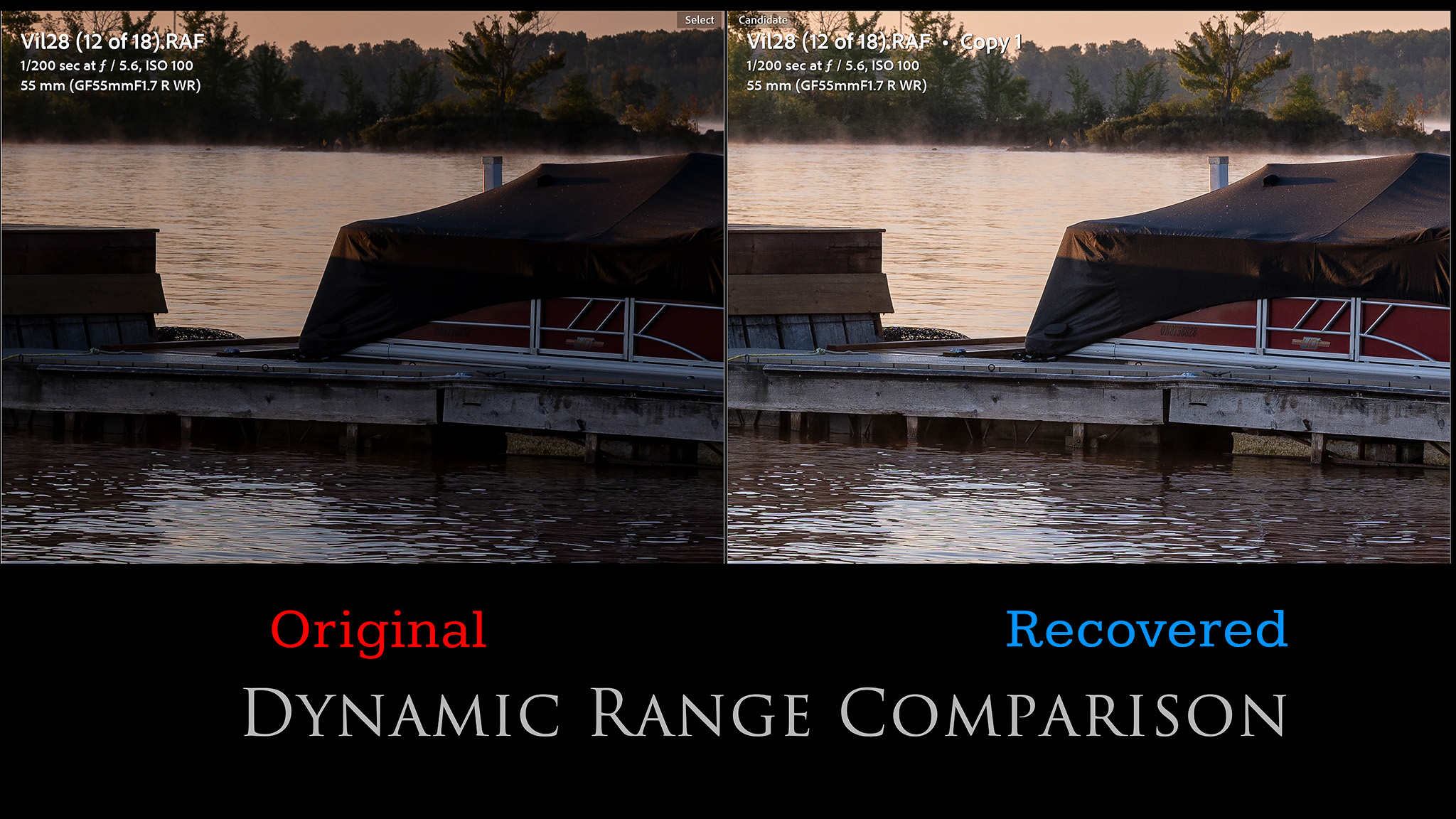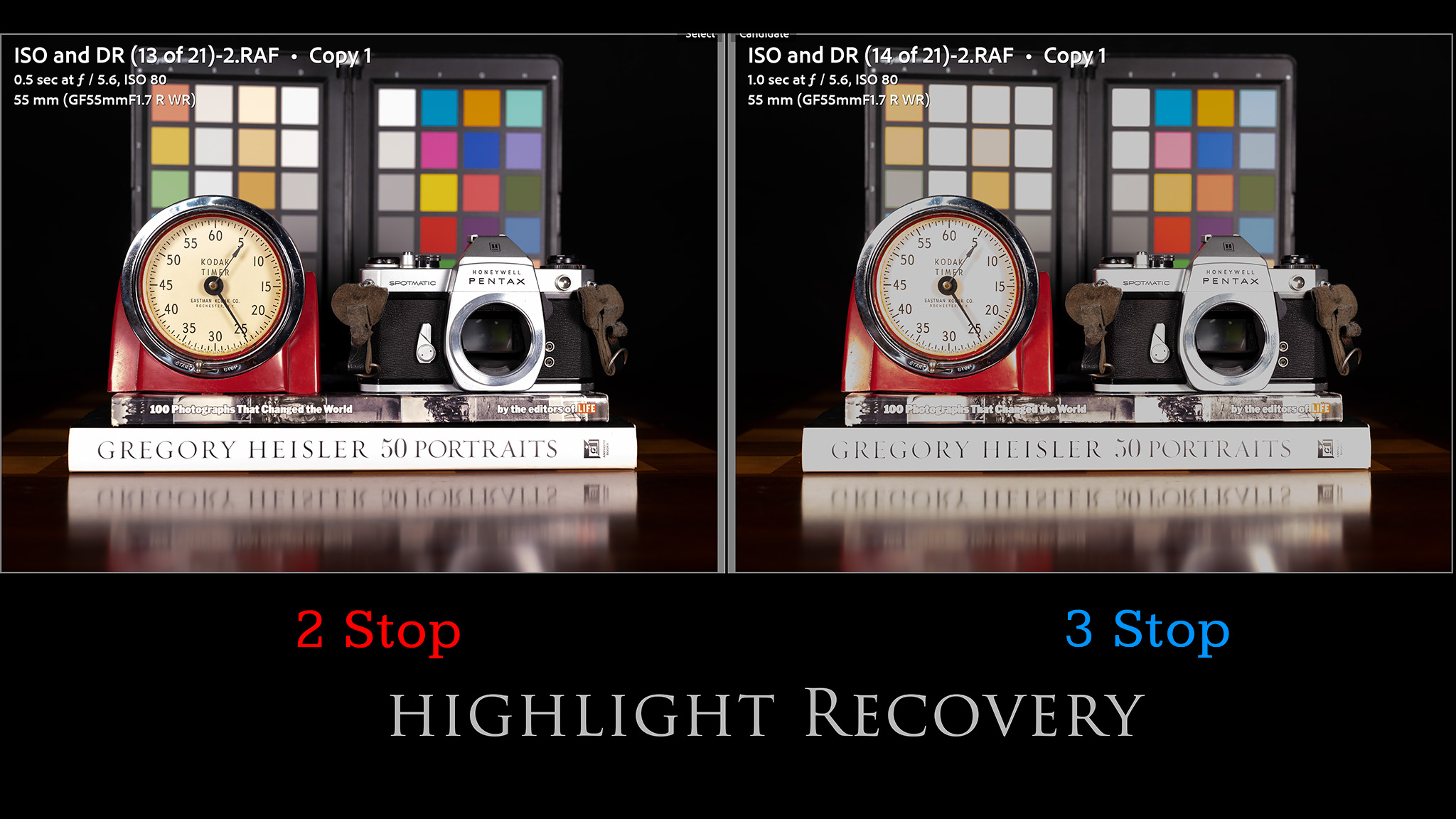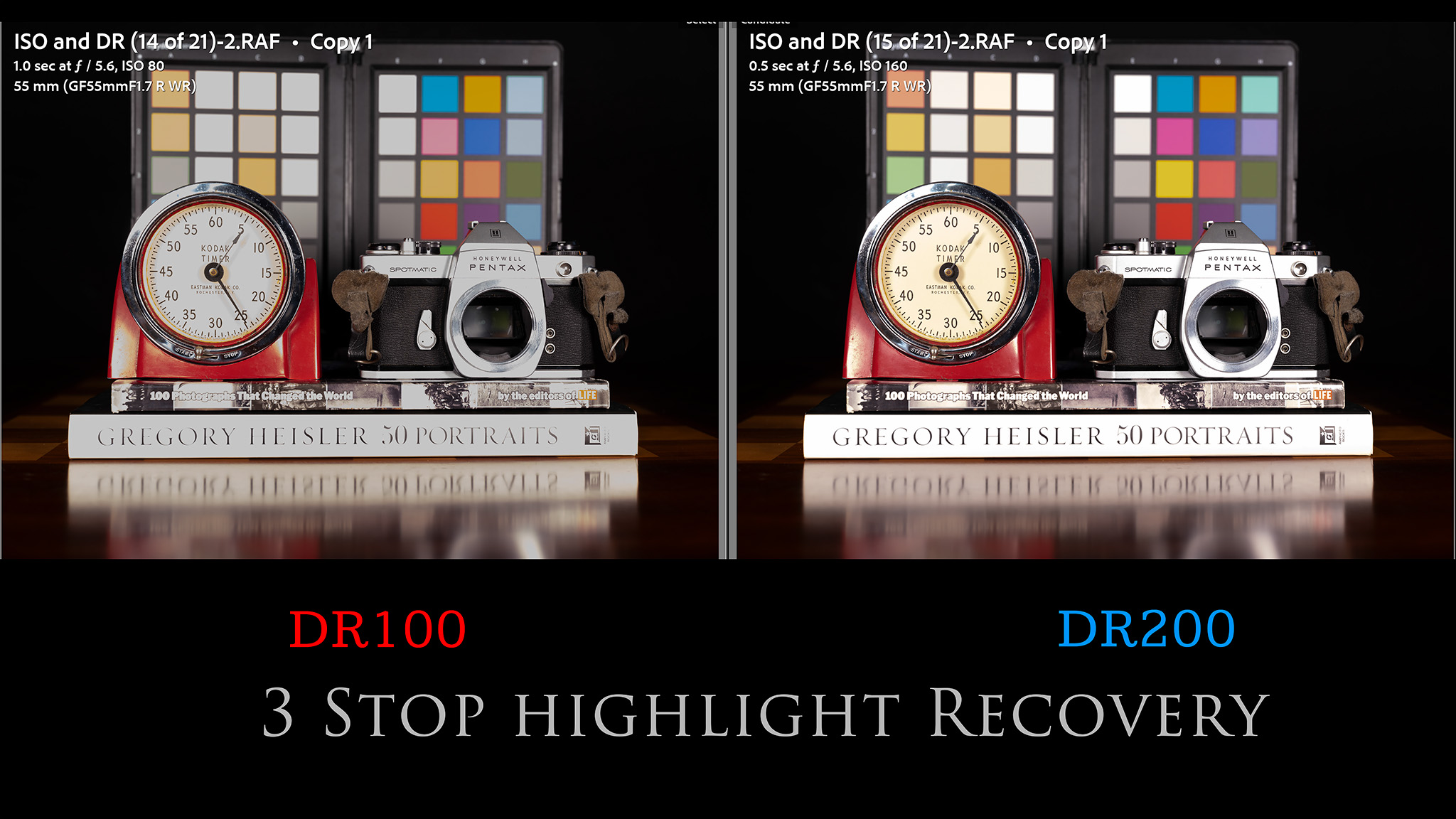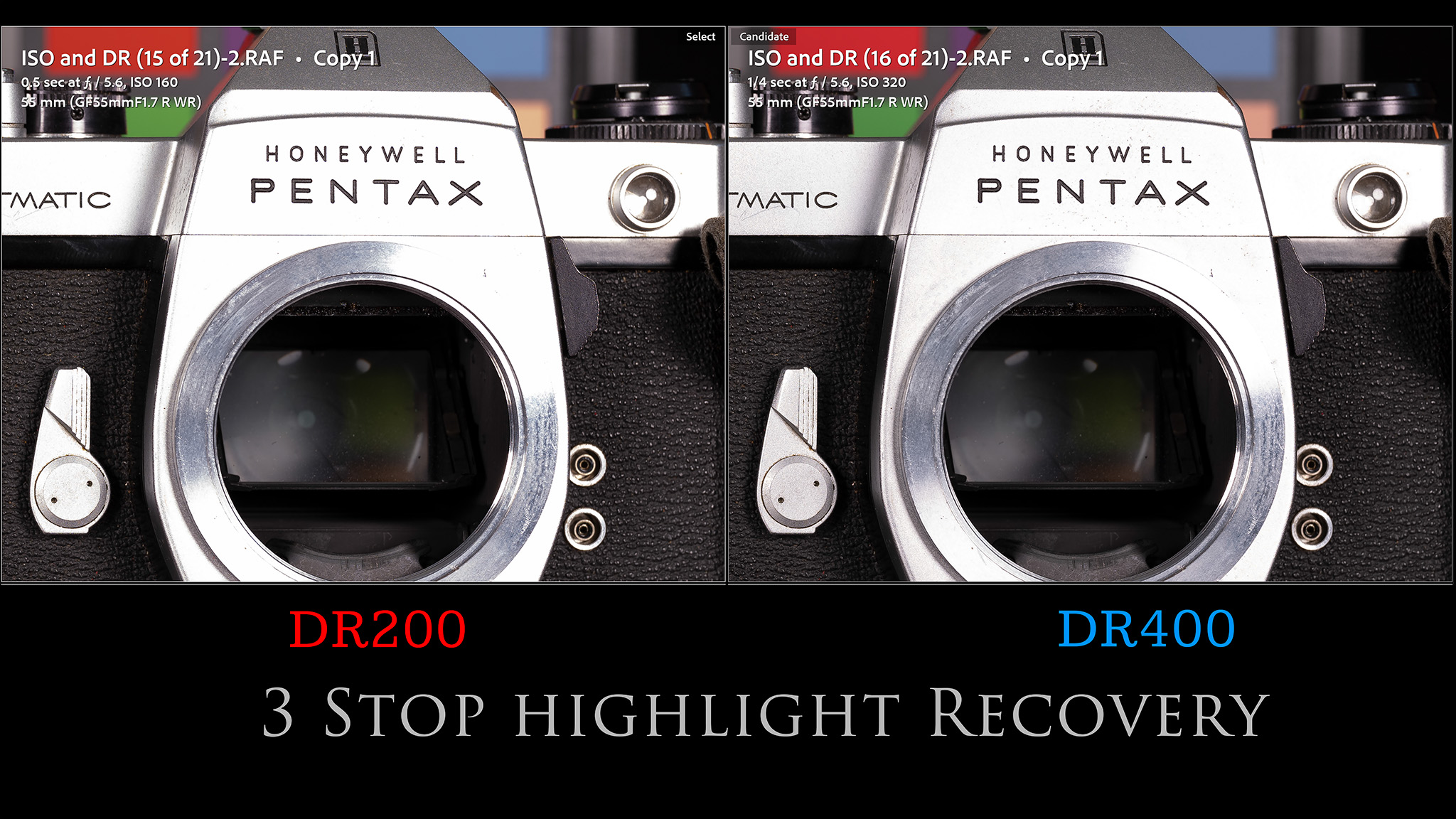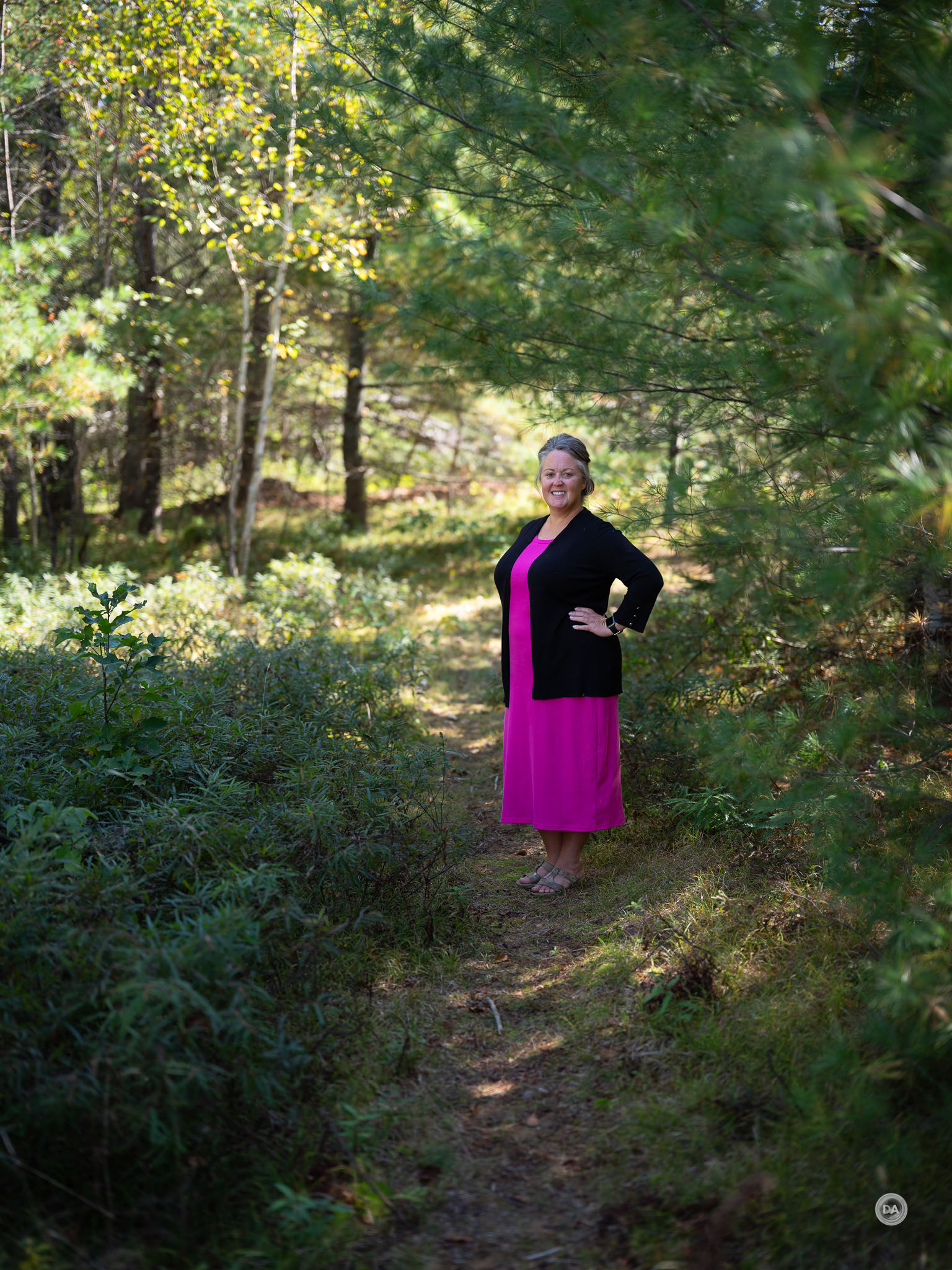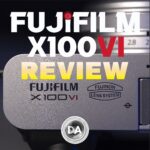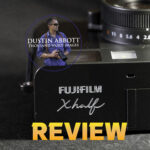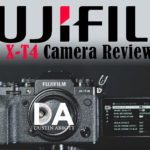
Fujifilm GFX100S II Review
Fujifilm has been working for years to “mainstream” medium format. They made a unique decision to embrace the smaller APS-C sensor (Fuji XF) and the large medium format sensor (Fuji GF) while bypassing the popular full frame sensor where most of the major brands live. The goal has been to make medium format competitive with full frame offerings from other brands, and the Fujifilm GFX-100S II might just be the one to finally pull in some of those who have been straddling the fence. The GFX100S II borrows many of the serious improvements of the GFX-100 II and distills them at a much lower price point ($5000 vs $7500 USD). What’s even more surprising about that price is that it is $1000 LESS than the GFX100S that it is replacing. There are still a number of areas where GFX cameras lag behind the best full frame cameras, but there’s also no question that no full frame camera I’ve tested delivers the kind of image quality you can achieve with Fuji’s big sensor cameras, and the 102MP medium format sensor in the GFX100S II is a big winner. Find out my full thoughts in my video review here.
Follow Me @ YouTube | Patreon | Instagram | Facebook | DA Merchandise | Flickr | 500px | X
Thanks to Fujifilm Canada for sending me a review loaner of this camera. As always, this is a completely independent review, and the thoughts and opinions expressed here are my own.
__________________________________________________________________________________________________
Here’s a basic breakdown of the key features of the GFX100S II:
Spec List
- 102MP 43.8 x 32.9mm BSI CMOS II Sensor
- X-Processor 5 Image Processor
- 4K30 Video; F-Log2 Gamma
- 5.76m-Dot OLED EVF
- 3.2″ 2.36m-Dot Tilting Touchscreen LCD
- 5-Axis Sensor-Shift Image Stabilization
- ISO 80-12800, up to 7 fps Shooting
- 400MP Pixel Shift Multi-Shot
- 8-Stop Image Stabilization
- 20 Film Simulation Modes
I spent some quality time with the upmarket GFX100 II in 2023, and as I’ve compared the two cameras, here are some of the key areas that I’ve seen differences. This might help you decide whether the GFX100 II is worth the extra money:
- 7 FPS vs 8FPS
- Lower resolution EVF (5.76m vs 9.44m dot)
- 4K30 vs 8K30
- 2 x SD cards vs CFExpress Type B and SD
- Micro HDMI vs full size HDMI
- 19 Lossless RAW buffer vs 302 Lossless RAW buffer
There are other minor differences, but essentially it boils down to slightly faster burst rate and much deeper buffer depth due to supporting a faster memory card spec, a higher resolution EVF, and the GFX100 II has much more capable video features. The good news is that if you just want to take amazing photos and not pretend this is a video or action camera, the GFX100S II is going to be an easy way to save $2500…and maybe buy that first lens or two instead.

But where things get crazy is when you compare the GFX100S II to the GFX100S.
- New and improved sensor (base ISO of 80)
- Higher resolution viewfinder (5.76m vs 3.96m)
- 7 vs 5fps
- Lighter
- Better battery life
- IBIS 8 vs 6 stops
- New grip material
- $1000 cheaper!
I’m not sure we’ve ever seen a clear camera upgrade that also managed to come with a price reduction of nearly 20%!
Before we dive in to the good stuff, let’s get a few relevant details out of the way. Purists will point out that Fujifilm’s GFX sensor is not actually true medium format. It’s true that the sensor size (43.8 x 32mm) is about halfway between a full frame sensor (35.9 x 24mm) and Hasselblad’s 53 x 40mm sensor size. You can see a comparison of sensor size below:
While Fuji’s sensor is smaller than the larger Hasselbad/Phase One sensor, it is worth noting that it is also nearly 70% bigger than the full frame standard! But the GFX 100S has even more accessible resolution due to having IBIS (In Body Image Stabilization), as stabilization is really important to getting excellent results where so much resolution is on tap. That makes each individual pixel about 30% bigger, which has the advantage of smoother gradations of color and light. There’s something very special about the rendering from medium format. I definitely think that Fuji’s higher resolution point (the 102MP 43.8 x 32.9mm BSI CMOS Sensor found in this camera) is by far the preferred option largely because the 50MP resolution point has a lot of full frame competitors, and, in my opinion, the current limitations of using medium format cameras are not outweighed by the sensor advantages in the 50MP sensor. This 102MP sensor has a clear advantage over anything currently available on full frame, making it unique and special. The ability to deeply crop images is like nothing else out there. You truly have the ability to create a variety of images from one frame:
You’ll note that the chart in the opening section also shows the various crop factors associated with the size of the relative sensors. A full frame sensor has a 1.0x crop factor, and the industry standard for focal lengths is in the full frame/35mm standard because of this. A 100mm lens, then, will behave like 100mm on the 35mm/full frame sensor, while the same lens mounted on a Fuji APS-C sensor (1.5x crop factor), will behave like a 150mm lens (full frame equivalent) in terms of focal length. Mount that same focal length on Fuji’s medium format (0.79x crop factor), and it will behave like a 79mm focal length. This helps explain why many of the focal lengths of Fuji’s GF lenses are atypical. The 55mm F1.7 I used in this review has a full frame equivalent of 44mm.
Fuji also has a very interesting new 500mm F5.6 lens that I’ll be covering as a part of this review.
Build and Features
The GFX100S II is very similar to the GFX100S in size, though there are some key improvements ported over from the GFX100 II. It has the same BISHAMON-TEX™ texture to the grip and the body, which is instantly my favorite grip material ever. It looks modern, sleek, and sophisticated, and feels great in the hands.

Everything about medium format is chunky if you’re accustomed to smaller formats. I was doing a concurrent lens review on my Sony a7RV body, and it felt like a toy when I went back and forth to it from the GFX100 II.
If you are unfamiliar with medium format and know Fuji more for X-mount, prepare to be shocked by how huge the mount size actually is. That opening to the sensor is massive – much bigger than the Fuji’s APS-C sensors or any full frame camera.

The inner mount diameter is 65mm, which is significantly larger than Fuji’s own APS-C X-mount (44mm), Sony E-mount (46.1mm), Canon’s RF (54mm), or Nikon’s Z mount (55mm). The front opening of lenses changes according to the focal length and aperture combination, but the rear diameter at the mount is consistent. This means that medium format lenses are going to be bigger than comparative Sony full frame lenses as a matter of course, because they start at nearly a 66% larger diameter. I used the GF 55mm F1.7 WR as one of my test lenses for this review, and it (like many shorter lenses for the system) is actually larger in diameter than it is in length…and noticeably more chunky at the lens mount.

This body is smaller than the GFX100 II, measuring 5.9 x 4.1 x 3.4″ (150 x 104.2 x 87.2 mm). That’s only 2.5mm narrower in width, but it is a full 13mm shorter and the grip is 11.5mm shallower. The end result is a camera that is actually smaller in volume than my full frame Nikon Z8 (1.36m vs 1.42m total millimeters in volume) and actually feels better in the hand due to a better shaped grip. I particularly find the rear of the grip where the thumb rests to be inspired; I feel like the camera fits really tightly and yet comfortably in my hand. This is not a small camera, but it is easily comfortable enough to use as a daily camera.

I personally didn’t love the body of the GFX100, as I found it unnecessarily large. It had the chunkiest grip of any camera I’ve used (the camera is 102.9mm/4.05″ deep), and while I have medium large hands, it felt just slightly uncomfortable – like I was having to stretch a bit. But the GFX100S II feels fantastic in my hands.
The weight is very manageable too despite the huge sensor. At 883g (1.9lb) with memory cards and battery inserted, it is actually 27g lighter than my Z8. My point is that the huge size and weight of earlier GFX cameras is no longer a barrier to making the switch from full frame when you have mainstream full frame bodies that are larger and heavier!

The GFX100S II has a robust magnesium alloy body that feels slightly more upscale than my four different full frame cameras from different brands. While the weather sealing isn’t quite as substantial as the more expensive GFX100 II, it has a total of 60 seal points, which is enough that I suspect most people won’t know the difference.

Fuji utilizes the fairly ubiquitous 2200Mah NP-W235 battery pack that I see in a lot of cameras. Surprisingly it is rated for 530 rather than the 540 shots the GFX100 II is rated for. I’m not sure why the rating would be lower here, but that’s obviously such a small difference that you’ll probably never notice. Getting a spare is always a good idea. You have different charging options including charging in camera.

On the right side there is a memory card compartment that houses dual SD/SDHC/SDXC (UHS-II) card slots. This is one of the key areas of differention with the GFX100 II, as it replaces one of the SD slots with the much faster CFExpress Type B cards. This is a big part of why the GFX100 II has much deeper buffers and 8K video options that the GFX100S II is lacking. To be fair, though, I’m still not convinced that medium format is a worthy alternative for sports work anyway. There is also a 3.5mm remote release port located on this side.


The left side of the camera has the other ports, and once again we see the downgrades from the GFX100 II. There is no ethernet port, with the top section housing a 3.5mm mic input along with a 3.5mm headphone monitoring output instead. The bottom compartment houses a USB-C port, micro HDMI jack (rather than full size on the GFX100 II), and a flash sync port. The compartment doors feel good, though the ports on this side dangle instead of being hinged, making them a little fiddly to pop back into place. This is a more traditional Fuji medium format camera that isn’t trying to be a sports camera or video alternative. The overall layout is basically identical to the original GFX100S model which it is replacing save with the improved grip material of the GFX100 II.

Fuji’s XF cameras are typically known by their plethora of physical controls (particularly dials), so it is more than a little ironic that their flagship cameras (with so much large bodies) offer far fewer controls. That doesn’t mean that the handling is bad, however; it just means that you need to spend a little time getting the camera set up the way you want.

The GFX100S II has a flat upper LCD screen that doesn’t have the tilt found on the GFX100 II. I liked the tilt as it made the screen more visible, but to be fair I had forgotten the tilt of the GFX100 II until I read through my review notes! The “Sub-LCD” is bright and clear and retains a passive display when the camera is powered off. You have three options for what is displayed on the top display, though you will need to change that in the menus unless you dedicate one of the two custom buttons next to the display to that task. It’s probably unlikely that you will change the display often enough to waste one of those valuable buttons on that. The three modes include one that imitates two dials, which shift depending on what mode you are in, a second simply shows histogram, and the third (and, in my opinion, the most useful), shows you a variety of information about shutter speed, ISO, aperture, exposure compensation, and more.) This screen is informational, not functional, in that changes are made via the front or rear dials rather than interacting with the screen itself. A button to the left of the screen will light up the top LCD if you are working in a dimly lit environment. I find this top screen very useful.

As mentioned, there are two custom buttons next to the top LCD that can be used for a variety of functions, and there is a much smaller third button next to the shutter that is dedicated to exposure compensation. By default you hold down that button and use the rear wheel to bias exposure one direction or the other. The front and rear wheel will typically be used to control shutter speed and aperture, though they can be customized to other functions.

I would still like to see a third wheel on the back of the camera (Canon/Sony style) that could be assigned a function without having to use a button. Case in point: by default the front control wheel beneath the shutter button needs to be clicked in to switch between aperture control and ISO control in my typical mode (AV). It’s a little clunky when I just rotate the rear wheel on my Sony or Canon cameras to interact with ISO.

On the front of the camera there is one further custom button located above the lens release. It can be programmed to a wide variety of functions.

On the left side of the viewfinder are two other control points. One is a traditional mode dial though with a whopping 6 custom modes. I like both the many custom modes and also the mode dial; it remains an easy, logical way to navigate different camera modes. There is a locking button in the middle. There’s also a switch that allows you to go from stills to movie function (allowing you to have a custom setup for both modes).

The main LCD screen is a 3.2″ 2.36 million dot touchscreen that can tilt on two axis – this allows you to get some function even when shooting at odd angles and in portrait orientation. I still prefer a fully articulating screen, but Fuji has resisted the use of fully articulating screens in their medium format bodies. As per usual, I was frustrated to find that the touch function has still not improved one bit from the day that I started testing Fuji cameras. You can use touch on the screen for touch to focus and shoot, but menu navigation is limited to the Q (quick) menu; you cannot navigate the main menu via touch. There’s also a bit more lag than recent Canon or Sony bodies when you touch. I do find Fuji’s quick menus a little frustrating, too, as what intuitively feels like a click to select (on the joystick) saves the selection and closes the menu, which often necessitates my opening it again to make other selections.

Unlike the GFX100 II, the GFX100S II is not compatible with Fuji’s FAN-001 accessory.
The back of the camera has the typical collection of buttons and the mini-joystick common to Fuji’s designs. The joystick feels nice and has a good texture. The control wheels on the front and back can also be clicked in for an additional function. I like the mode selector near the viewfinder that allows you to quickly move between Single Shot, Continuous AF, and Manual Focus along with the great implementation of the Q button.

The viewfinder is a traditional, fixed variety (not like the removable option on the GFX100 II. It does have a resolution upgrade compared to the GFX100S, however, and is now 5.76 million dots rather than 3.69m dot. It also has a bit higher magnification (0.84x vs 0.77x). Overall the viewfinder is nice and clear and generally a joy to use. It’s not as exceptional as the amazing viewfinder of the GFX100 II, but is a nice upgrade in resolution over the original GFX100S.

At the moment there is no battery grip option for the GFX100S II.
The GFX100 II body has truly impressive in-camera stabilization that is CIPA rated up to 8 stops. I was able to get very effective stability for handholding stills and video. The camera is noticeably stable in operation, making it easy to handhold video footage or normal photos at low shutter speeds. I’ve been using the new GF 500mm F5.6 R LM OIS lens during this review, and it is definitely a joy to get great stabilization even with (finally) a longer focal length on the platform. Here’s a crop from a shot of my bees that I shot at 500mm, 1/50th of a second.

All told, while there isn’t a lot different on the outside when compared to the GFX100S, there are some key improvements. The grip material is beautiful, the body feels very robust and well made, and there are improvements to the viewfinder and IBIS. I still want that third wheel in the back, though, as I think it would help to making changes on the fly much more intuitive.






At the same time, however, this isn’t a hard camera to use, and getting a highly functional medium format camera for $5000 is a huge win for consumers who want to experiment with the truly BIG sensor.
Autofocus Performance
Fuji’s goal has been to make a previously inaccessible format more “populist” by giving its medium format cameras autofocus performance that is close to what’s achievable on smaller formats. Every generation is to be “the one” where autofocus truly catches up, but there is of course the reality that this is a moving target. Whether or not Fuji has been successful largely depends on what you use as a standard. If you are comparing with the historical reality on medium format, then they have achieved great success. It was not uncommon for medium format cameras a decade ago to have just a few autofocus points or even a single autofocus point. If your point of comparison is Fuji’s smaller sensor cameras, then you can also consider what Fuji has done a success. Autofocus performance isn’t quite at the level of my X-H2, but it isn’t far off.

But if your point of comparison is the alternate full frame cameras from Canon, Sony, or Nikon, then it’s not even close. The most recent full frame cameras from those companies (or APS-C cameras, for that matter) are still WAY out in front of the autofocus system in any Fuji camera. I test nearly a hundred lenses per year, and I can safely say that just about any sub $300 autofocus lens made for Sony or Nikon is going to deliver a better autofocus experience than what I find with the best and most expensive lenses on Fuji.
Here is the problem right here: “Thanks to an improved predictive AF algorithm, GFX100S II delivers enhanced subject tracking and improved AF accuracy in low-contrast environments, compared to its predecessor, the GFX100S.” That’s taken from Fuji’s own website. My first review of a Fuji camera was the X-T3, which I reviewed in 2018. That camera had the last major hardware update to the autofocus system that I’ve seen on Fuji over the subsequent 13 Fuji camera reviews that I’ve done. The advance on the X-T3 was the hybrid of contrast and phase detect autofocus systems, with 425 selectable phase detect autofocus points across the frame. Every subsequent “upgrade” since this point has been more about updating/improving focusing algorithms and the use of AI in some cameras to help make tracking more predictive with certain trackable subjects.

But what I’ve found is that Fuji is falling further and further behind the competitors. The X-T3 was fairly competitive in 2018, but six years later, everyone else has improved their hardware along with their processing to achieve vastly improved AF systems. This is the same basic AF system Fuji has been using for six years at this point with essentially a new coat of paint over it. So, as has been the story for my past five or six GFX reviews, the autofocus is better than alternate medium format systems but is in no way really a substitute for what full frame cameras from other brands are delivering. As long as your expectations are realistic, however, you should be satisfied with what you get from the GFX100S II, which has essentially the same autofocus system that we saw in the GFX100 II.
The X-Processor 5 adds AI tracking of a wide variety of subjects and a faster, more intuitive focus process. Tracking recognizable subjects has gotten better. When I switched into “Bird” tracking (which is the proper choice for tracking insects), for example, I saw a little green box lock onto a bee on one of my hives and started tracking her. You can see that the end result (at 500mm) is focused more on her torso than her eyes, but still, not bad.


Trackable subjects include humans (obviously), along with animals, birds, cars, motorcycles, bicycles, airplanes, trains, insects, and drones. For insects you select birds as mentioned, and for drones you select airplanes.
A shot of a neighbor’s cat in their yard delivered well focused results even from a distance.


Autofocus is generally fairly bulletproof for grabbing the eye area now, though sometimes focus will still grab the eyelid or lash rather than the iris. This shot of Ferrari from the side and with the eye barely visible still shows fairly good results.


Introduce some movement into the scene, however, and the AF system often doesn’t quite keep up. I tried to get shots of Nala as she rolled around, and you can see that in this frozen moment in the sequence focus isn’t really anywhere near her eye.

I also found that my results when shooting birds in flight with the GF 500 was really hit and miss. It takes a bit to acquire focus sometimes, and once the AI is tracking, it does reasonably well, but the perfect focus rate is still considerably below what I expect from the cameras I personally own. I had some definite misses in sequences where I would typically expect to get well focused results.



But other situations the tracking did fairly good until the subject got too near the edge of the frame. There is some blackout in between frames, which makes it a little harder to smoothly pan with the subject.






Focus reactiveness is still not on par with any of the current full frame options, so there will be plenty of moments where focus is still adjusting and you miss the shot. It’s not unusual to have a focus rack in the wrong direction (particularly with the big GF 500) and thus focus take longer than what you like, and focus will sometimes get “stuck” and it takes focusing on a difference subject or even manually focusing to get things where you want. But fortunately most of the time focus works pretty well. And when you nail focus, you can get amazing detail (even with the 1.4x TC attached, so 700mm here).


This is not a sports camera (despite Fuji’s marketing to the contrary), but it would make for a good portrait and general purpose camera at this point. One other thing you will have to adjust to, however, is shutter lag if you’re coming from another system. There’s a brief but noticeable lag between the moment you click the shutter button and the photo is actually taken. If you are shooting a burst, subsequent frames come faster, but there is a tiny lag in the first frame.
I also found that autofocus sensitivity in low light was good, able to still autofocus (though at slower speeds) in very dim lighting conditions.
Autofocus also worked well for landscape shots or shots with larger depth of field:

The focus system is largely the same as the GFX100 II, but, as mentioned, the buffer is not. I like to use Lossless Compressed RAW (where available) as a standard of comparison, as it is probably the most useful of the file formats. By that standard, the GFX100 II had deep buffers (particularly when consider that each file is 102MP!), capable of storing over 300 Compressed RAW images before slowing down (at a burst rate of 8FPS). That means you could hold down the shutter for nearly 38 seconds and have a constant burst rate. The GFX100S II is severely limited by having just SD cards, as it has to push identically sized files through a much smaller pipeline. The burst rate is 7FPS, which is not much slower, but the buffer depth for Lossless Compress RAW files is just 19 frames by comparison, meaning that you have less than a 3 second window to capture the action before the buffer fills. Here’s a look at a chart from Fuji showing buffer depth in different formats and configurations.

I’m not sure that this is a huge deal for most people, however, as I’ve already mentioned that the focus system is less than ideal for sports anyway. If you think you need the ability to shoot protracted bursts, you’ll need to pony up for the GFX100 II instead.
The GFX100S II isn’t quite as capable for video, either, though video AF is about the same. Focus pulls were relatively fast and smooth for medium format (though this will obviously be lens specific). I also saw less obvious stepping. But what I also saw was a frequent lack of confidence in locking focus. There were a few focus pulses and sometimes focus never transitioned properly to the new subject. In real world shooting I also saw some hunting and pulsing in landscape scenes, though most were okay.
My hand test was fairly successful, and while focus transitions were slow enough that sometimes I had started the next movement before it arrived there, a few of the cycles were accurate and smooth. My experience with Fuji’s current state of autofocus across its cameras is that the AF system works best when a trackable subject is in the frame.

I wouldn’t characterize the AF as quite as good as the X-H2 or X-H2S, but it’s close. There isn’t much of a gap between the AF in Fuji’s large and small sensor cameras now, and that’s huge progress. Just don’t expect the AF performance to match the current AF systems in Canon, Sony, or Nikon full frame cameras. It’s all about having reasonable expectations…
Video Performance
This is another key area of differentiation between the GFX100S II and the GFX100 II. Fuji went all in on the video side of things with the GFX100 II. Those improvements included autofocus improvements (AI tracking is available in both video and stills), formats and resolutions (up to 8K30 or 4K60), a new film simulation (REALA ACE), a base ISO of 100, and even a wide variety of framing options. The GFX100S II isn’t nearly as robust when it comes to the available video modes and options. At 4K the maximum available resolution is 30FPS, and there are no higher options available.

4K options include 17:9 or 16:9 framing with bitrates as high as 720Mbps or as little as 50Mbps. Full HD options range only as fast as 60FPS, so there aren’t really any slow motion options available.
There are some Apple ProRes options, though these seems to be limited to external recording to an SSD (via USB-C).
Internal recording is limited to 10 bit, but the GFX100S II also has the ability to output 12 bit RAW via HDMI along with some 10 bit options. They have limited frame rates to the same options available internally, however. Here’s a look at the options available via HDMI output (to an external device).

Another interesting addition is the ability to record directly to an external SSD via the USB-C port. You can record both stills and video directly to an external drive.
Also included is Fuji’s F-Log2 option for advanced editing capabilities. Fuji claims more than 14 stops of dynamic range is potentially available with F-Log2. Fuji has also included waveforms and vectorscopes for more advanced monitoring of colors and exposure during video capture.
I’m not sure how much of a draw the advanced video specs for the GFX100 II have been, but while the format options are much limited here, there’s still enough on the GFX100S II to get some great looking footage.
Sensor Performance
The GFX100S II has inherited the upgraded new 102MP 43.8 x 32.9mm BSI CMOS II Sensor that debuted in the GFX100 II. While the resolution is the same as the GFX100S, this is a new and improved sensor that delivers the finest image quality that I’ve ever seen. Because this is the same sensor as the GFX100 II, I will be using my tests from that camera here, though the references will be updated to the GFX100S II (my review cycle with the GFX100S II was both brief and happened during a period where I had many reviews going on).
We’ve got a massive 11648 x 8736 pixels in 4:3 crop mode, and Fuji provides a variety of other framing options in camera (though it’s worth noting that RAW images will still show up as the full resolution 4:3 files). The amount of detail that a camera like this can generate is just staggering, and the extremely high resolution means that you have near unlimited potential for cropping, be it a portrait:
…or a landscape scene:
Files are going to be big, obviously, though you have considerable control over that that. You can choose Uncompressed RAW files in either 16 or 14 bit (around 200MB, with 16 bit only slightly larger), Lossless Compressed RAW in 16 bit (near 120MB) or 14 bit (92MB), or Compressed RAW at 69MB (16 bit) or 60MB (14 bit). JPEGs are around 43MB or slightly smaller depending upon the quality you choose. You also have the ability to choose DCF, HEIF, or TIFF formats.
The sweet spot for me is the Lossless RAW files, which are indistinguishable from the Uncompressed RAW files. It’s called “Lossless” for a reason. I dare you to spot the difference between the two here:
I also saw only a very minor difference in contrast when comparing 16 bit lossless (left side) with 14 bit lossless (right side):
You can save a little more file space by choosing the Lossless 14 bit option and still get very near maximum performance.
I’ve always preferred Fuji’s 100MP sensors to the 50MP sensors, as the huge resolution numbers match the larger format better in my mind. The end results (which are the real reason to choose medium format) just feel more special. In my photographer career to this point these sensors are the pinnacle of what I’ve personally used in terms of image quality. Images are just…special.
A larger sensor area means that pixels themselves are larger, which, in theory, allows for less noise, better dynamic range, and smoother transitions. I’ve always favored full frame sensors over APS-C for that reason, and Fuji’s “medium-format-lite” sensor takes that further still, though the difference between full frame and the 0.79x crop of Fuji’s medium format isn’t as pronounced as the difference in sensor size between full frame and APS-C. But consider this: Fuji’s medium format sensor size is roughly 4x larger than the surface area of their APS-C sensor, so there is a huge difference between those two extremes. What we will find is that this adds up to better ISO performance, better dynamic range, and also better colors and overall tonality to images.
ISO Performance
A major change here is that the base ISO is now 80 rather than 100 with the new sensor. That’s interesting to me, as it not only allows for lower noise and even higher dynamic range, but it also opens up Fuji’s DR200 and DR400 modes faster as well (IS0 160/320 rather than 200/400), meaning that there will be less noise in the shadows when using those modes. Fuji tends to be a little overly conservative with their native ISO ranges in their cameras according to my tests. What we will find is that the GFX100S II is completely usable at the end of the native ISO range of 12,800 (which is actually a little higher than typical due to the ISO range starting lower). I think this monochrome looks awesome – clean and bright despite being shot in natural light at ISO 12,800:
The pixel pitch of the GFX100S II is 3.76 microns, identical to the pixel pitch/density of the 62 MP Sony a7RV full frame sensor and the 26Mp APS-C sensors on Fuji’s 26MP APS-C sensors. A high number of pixels creates more visible noise, which on the Canon EOS 5DsR meant that by its ISO limit of 6400 it was a noisy mess. That’s clearly not the case here.
Here’s a look at the “still life” setup that I use for these tests and that crops will be displayed from:
There is only a minor uptick in visible noise and minimal loss of contrast at ISO 1250 (5 stops) when compared to base ISO.
Moving up several more stops brings us to ISO 5000, and you can see that while there is very slightly more pattern noise, the results look largely the same:
There’s some very mild inconsistency of pixel luminosity in the shadow areas, so contrast isn’t quite as high, but as you can
Going up another stop and a third to the native maximum value of 12,800 results in slightly rougher noise, but nothing significant.
You can see the shadows are raised a bit more, but things continue to look pretty clean overall. I actually really like the look of ISO 12,800 images in one of Fuji’s monochrome simulations. Images have a very film-like feel to them.
While I haven’t shown examples here, the expanded ISO range goes as low as ISO40 and as high as ISO 102400. Within the native range (80-12,800) there isn’t a value that I would personally hesitate to use, which is very impressive considering this is a 102MP camera! This is a camera that performs even in very low light conditions.
Dynamic Range
I like to use photonstophotos.com as a point of reference, and while they haven’t yet tested the GFX100S II’s sensor, they did test the same sensor in the GFX100 II and found that it was slightly better than the older GFX100S (12.55 vs 12.33 stops) which places it only behind the slightly larger sensors in the Hasselblad H6D-100c and and Phase 1 IQ3 and IQ4 models. For the money, you cannot find a better sensor than this. As with all Fuji cameras, you can actually improve this by using their DR200 and DR400 settings, which we’ll detail in just a moment.
Good dynamic range gives you tremendous flexibility for processing images. In the case below, a very strong backlighting meant that I had to choose between exposing for my subject or for the background. I chose the background, and then used the AI masking feature in Lightroom to grab my subject and increase the exposure and shadow recovery on him. The end result is nice and clean.
In this second example, you can see that I’ve both raised the shadows to uncover information there along with reducing highlights too allow the colors and details of the sky to emerge. I’m sure you can agree that the end result looks extremely nice.
Fujifilm has given us a lower base ISO in this new camera, so there should be just a little extra dynamic range available at ISO 80 vs the base ISO 0f 100 for previous cameras. In my particular tests, I establish a base line exposure at ISO 80 (1/9th of a second here), and then test in both directions by over or underexposing and then recovering the image in post. Eventually you reach a limit of how far the camera can go and still successfully recover the image.
When it comes to the shadows, that limit extends pretty far. I underexposed until my test subjects pretty much disappeared, but when I added that light back in post, the image popped right back out (recovered image on right):
Even zooming in 100% we can see that everything remains perfectly clean. The shadows are deep, the colors are neutral, and there is good contrast in the recovered textures. Very impressive.
You couldn’t ask for more than that. That means that you’ll have very few practical limits for recovering shadow information. Here’s another image where I’ve gotten a lot of information back from some shadowed areas in this image:
Definitely useful.
How about highlights? I find the overexposure limit is between 2 and 3 stops. In the comparison below you can see that the 2 stop recovery on the left is nice and clean, but if you look at the right side (3 stops) you’ll find that color information has been lost from the swatches and that some of the texture information has been blown out and is unrecoverable.
The image on the right is typically not going to be usable, so you’ll want to avoid that degree of overexposure. If you want more latitude in the highlights you can either underexpose a bit (shadows are easy to recover), or you can utilize Fuji’s DR200 and DR400 modes. If you shoot at a slightly higher ISO value (160), you can choose the DR200 mode, or at ISO 320 you can choose the DR400 mode. In DR200, camera will use electronic trickery to sample the shadow and midtone data from the current ISO setting (160+) while using the base ISO’s highlights, giving you an additional stop of DR. In DR400 the process is further exaggerated as the camera can then sample the highlights from two stops down, giving you two additional stops of DR. Using the DR200 technique, that same 3 stop shadow recovery that was unusable before looks considerably better:
Moving on to ISO 320 unlocks the DR400 mode. While the DR200 and DR400 results look similar on a global level, punching in to 100% shows that some of the texture information that was blown out in the DR200 result is visible in the DR400 result.
It also means that you could push into the 4 stop of overexposure range and get a similar result to our 2-stop overexposure at base DR results.
I wasn’t worried at all when for some reason this shot of flowers came out seriously overexposed for some reason. The amazing dynamic range makes it effortless to recover.

I always note that more dynamic range doesn’t always equal better images. Sometimes leaving a little mystery in the shadows adds a lot to an image, and often a blown out light coming through a window is preferable to seeing what’s outside.
Color
Fuji’s medium format cameras have long been a great platform for gorgeous colors, and that’s definitely true here. The larger pixels result in more gradations and subtleties in images, and images are just special.
Portrait colors are just so rich:
Pair that big sensor with a large aperture lens like the 55mm F1.7 lens that I used for this review and background will just melt away:
Bottom line is that there is no camera priced $5000 or less that will deliver better image quality than the sensor in the GFX100S II. Previously the cheapest you could get this sensor was in the $7500 GFX100 II, and it closely rivals the capabilities of even more expensive medium format options. I own a number of very fine full frame cameras, and I can always tell the difference when processing images from the GFX cameras (or at least those with the 100MP sensors). Check out more images in the image gallery to see more examples.
Conclusion
The Fujifilm GFX100S II might just be the one that tips those who have been straddling the fence on Fuji’s medium format over the edge. It has a number of areas where it is clear upgrade over the GFX100S, and yet costs a whopping $1000 less (which might be a first in camera history!) There are some clear areas where the GFX100 II is superior, but I feel like Fujifilm has done a tasteful job of delineating between the two models. The GFX100 II is the superior “jack of all trades” model, embracing some areas where medium format typically hasn’t gone. The GFX100S II is a more traditional GFX camera, so it isn’t quite as versatile for things like sports or video, but it packs both the focus system and sensor of the GFX100 II into a much more affordable package.

We’ve also got a new lens to dramatically increase the reach of the system in the GF 500mm F5.6. When combined with the 1.4x TC this gives a whopping 700mm of reach (or 553mm full frame equivalent), which now makes birding and wildlife more realistic options with the system. Here’s a 700mm shot:

I would sum up the potential decision for you like this: full frame cameras that arrive near the $5000 price tag of the GFX100S II will absolutely have better autofocus, faster burst rates, deeper buffers, and better video specs. There will probably be more lens options, too. But none of them can come close to the image quality afforded by the big sensor of the GFX100S II, and none of them can deliver such massive resolution. If you are a portrait, architecture, or landscape photographer who lives for ultimate image quality, now may be the time to take the plunge into the GF world. It’s a pretty special place.

Pros:
- The best image quality you can get for $5000
- Incredible resolution
- Excellent dynamic range
- Strong high ISO performance despite all those pixels
- Strong, durable body with good weather sealing
- Exceptional IBIS system I’ve ever seen
- Improved autofocus
- Excellent top screen
- Viewfinder is very good
- REALA Ace
- LOVE the new grip texture
- How often do you get an upgraded camera AND a $1000 price drop?
Cons:
- Autofocus, though improved, remains the weakest area
- I miss a rear wheel/control dial
- Can we please improve the touchscreens, Fuji?
- Buffer fills very quickly
_________________________________________________________________________
GEAR USED:
Purchase the Fujifilm GFX100S II @ B&H Photo | Adorama | Amazon | Camera Canada | Amazon Canada | Amazon UK
___________________________________________________________________
Purchase the Fujinon GF 500mm F5.6 @ B&H Photo | Adorama | Amazon | Camera Canada | Amazon Canada | Amazon UK | Amazon Germany
_________________________________________________________________
Want to support this channel? Use these affiliate links to shop at: B&H Photo | Amazon | Adorama | Camera Canada | Amazon Canada | Amazon UK | Ebay | Make a donation via Paypal
Buy DA Merchandise https://bit.ly/TWIMerch

Keywords: GFX, GFX100S II, GFX 100S II, 100S, II, 102MP, Fujifilm, Fujinon, Dustin Abbott, Review, Sensor, Tracking, IBIS, Stabilization, Eye AF, Review, Hands On, Video Test, Sharpness, High ISO, Autofocus, Dynamic Range, Medium Format, Lens, Comparison, Test, Dustinabbott.net, APS-C, X-Trans, letthelightin, DA #letthelightin, #DA, #Fujifilm




